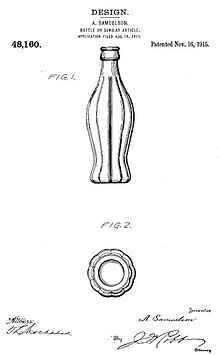Design Patent
What Is a Design Patent?
A design patent is a form of legal protection of the unique visual qualities of a manufactured item. A design patent may be granted if the product has a distinct configuration, distinct surface ornamentation or both. In other words, a design patent provides protection for the ornamental design of something that has a practical utility.
In the United States, that means an item that is substantially similar to something that has the protection of a design patent may not be made, copied, used or imported into the country. In other countries, a registered design may act as an alternative to a design patent. In certain European countries, patent protection for designs may be obtained for a fee and by meeting basic registration requirements.
A design patent is valid for 14 years (if filed before May 13, 2015) after being awarded and is not renewable; if it was filed on or after May 13, 2015, the design patent has a 15-year term from the date of grant.
How a Design Patent Works
An item or object that is protected by a design patent carries broad protection from copyright infringement. A design that was not intended to be a copy and which was devised independently from an existing, design patent-protected item may still infringe upon that design patent.
KEY TAKEAWAYS
- A design patent application may only include a single claim, according to the United States Trademark and Patent Office.
- Filing for a design patent costs less than filing for a utility patent.
- The total cost to file for and obtain a design patent can run anywhere from $1,000 to $3,000 in total, depending on the situation and the complexity of the design patent.
- Without filing a patent on your design, you may run the risk of a copycat design being used by competitors.
In some countries, such as the U.S., Canada, China, Japan, and South Africa, applications for design patents are kept secret until they are granted. In Japan, secrecy can be extended to three years after registration is granted. The first U.S. design patent was awarded in 1842 for printing typefaces and border (fonts).
Design Patent vs. Utility Patent
A design patent should not be confused with a utility patent, which safeguards an item’s unique way of operating or functionality. A design patent protects how an object looks. A single product may have both a design patent and a utility patent at the same time. One of the key differences between the two patents is their lifespan.
While a design patent may last 14 or 15 years, depending on its filing. A utility patent lasts for 20 years and requires periodic maintenance fees. A design patent does not require maintenance fees.
Design Patent Examples
Some examples of design patents include ornamental designs on jewelry, automobiles or furniture, as well as packaging, fonts and computer icons (such as emojis). Some famous design patent objects include the original curvy Coca-Cola bottle (1915) and the Statue of Liberty (1879).
When a company’s product design has substantial cachet, a design patent solidifies its competitive advantage by penalizing other firms that try to develop similar-looking items. For example, Apple has been awarded damages reportedly totaling more than $900 million from Samsung, which violated its iPhone design patents.
Design Patents 101 – Protecting Appearance Not Function
Design patents are, in my opinion, an unfortunately overlooked patent. While a single design patent is a weak form of protection, they can be obtained quickly, rather inexpensively, and you can market the product using the terms “patented design” once a design patent has been obtained. Therefore, inventors and their representatives would do well to consider whether one or more design patents would be useful to supplement protection sought by a utility patent in order to facilitate a larger business strategy.
Design Patents and Design Patent Applications
In a design patent application, the subject matter claimed is the design embodied in or applied to an article of manufacture. A design patent does not cover the article itself, the way it functions or any internal mechanical structure. A design patent merely protects the appearance of the tangible article.
A good example is the pressure washer shown to the right. This design patent will cover the way the device looks, not the function of a pressure washer. So if someone make a power washer that looks different they would not be infringing.
In general terms, a “utility patent” protects the way an article is used and works, while a “design patent” protects the way an article looks. Therefore, design patents are made up of drawings that show the invention and very little text. The drawings required include the following views: top, bottom, front, back, left and right. Each of these six view is required unless one or more repeats. A perspective view (shown to the left) can also be included and is frequently helpful.
With respect to the pressure washer shown to the right, notice the broken lines. The claimed invention is shown in solid lines. The two most common uses of broken lines are to disclose the environment related to the claimed design and to define the bounds of the claim. Structure that is not part of the claimed design, but is considered necessary, may be represented in the drawing by broken lines. This includes any portion of an article in which the design that is not considered part of the claimed design.
Because a protectable design is manifested in a particular appearance, the subject matter of a design patent application may relate to the configuration or shape of an article, to the surface ornamentation applied to an article, or to the combination of configuration and surface ornamentation.
Both design and utility patents may be obtained on an article if an invention resides both in its utility and ornamental appearance. For example, consider a sneaker. If you were to create a unique outward appearance for the sneaker you could seek and obtain a design patent. If the sneaker itself operated mechanically different, perhaps by dramatically reducing the impact felt by the wearer as the result of some unique material used in the sole, then the sneaker could also be protected by a utility patent because the invention would also include a functional component. A design patent alone would not protect any functional aspects of the sneaker.
While utility and design patents afford legally separate protection, the utility and ornamentality of an article may not be easily separable. Articles may possess both functional and ornamental characteristics. For that reason inventors and their representatives should always ask themselves whether it is appropriate to simultaneously seek both a utility patent (to protect function and internal mechanical structure) and a design patent (to protect the way the article visually presents).
Design Patents vs. Utility Patents
Generally speaking, design patents are much easier to obtain than are utility patent applications. Furthermore, design patents can generally be granted with 12 months of filing an application. The cost of the application process and examination is quite a bit cheaper than the associated cost of filing and seeking a utility patent application. Still, design patents are generally considered a weak form of protection because they specifically only protect the way something looks. Any variation in appearance could make it impossible to use a design patent to stop what may otherwise seem like a copy or knock-off. But given the ease with which they can be obtained and the relatively low cost having design patents to supplement a patent portfolio can be a very wise choice, particularly if multiple design patents are obtained.
Some of the more common differences between design and utility patents are as follows:
- Generally speaking, the term of a utility patent on an application filed on or after June 8, 1995 is 20 years measured from the U.S. filing date, while the term of a design patent is 15 years measured from the date of grant.
- Maintenance fees are required for utility patents, but no maintenance fees are required for design patents.
- Design patent applications include only a single claim, while utility patent applications can have multiple claims.
- Restriction between multiple, distinct inventions is discretionary on the part of the examiner in utility patent applications, while it is mandatory in design patent applications. This means if you have more than one design you will almost certainly require multiple design applications unless the variation is quite small.
- Foreign priority can be claimed for the filing of utility patent applications up to 1 year after the first filing in any country subscribing to the Paris Convention, while this period is only 6 months for design patent applications.
- Utility patent applications may claim the benefit of a provisional application for up to 12 months, but design patent applications may not claim priority to a provisional patent application.
- A Request for Continued Examination (RCE) may only be filed in utility and plant applications, while RCE is not available for design applications. However, a continued prosecution application (CPA) is available for design applications (and not for utility applications). Functionally, an RCE and CPA are quite similar from the applicants perspective.
- Utility patent applications filed on or after November 29, 2000 are subject to publication, but design applications are not published.
Design Patent Cost: Everything You Need to Know
Patent Law ResourcesDesign Patent
A basic design patent cost for an application is $760 for a large entity. A small entity's fee is $380, while a micro-entity's fee is $190.5 min read
How Much Does a Design Patent Cost?
The basic filing fee for a design patent application is $760 for a large entity. A small entity's fee is $380, while a micro-entity's fee is $190. If you hire a patent lawyer to assist with preparing documents and filing the design patent application, the cost could be around $1,500-$3,000.
The cost of a design patent is much less than the cost to get a utility patent. There are a few reasons that inventors and designers opt for design patents instead of or along with utility patents.
Utility patents cover the way a manufactured product is used and works, while a design patent protects the unique ornamental design. One of the main reasons you might choose a design patent is if you created a new and different design for something that's already patented.
Without a design patent, nothing prevents other companies or individuals from directly copying your design. Leading auto and apparel manufacturers file design patent applications on just about every item they make. They're not trying to patent a shoe, a seat within a car, or a steering wheel; instead, they're protecting their unique designs from being stolen.
Some of the most important aspects of a design patent application are the drawings used to showcase the design. Unless you are familiar with exact requirements and specs for patent drawings, it's best to hire a professional. The cost for high-quality and professional patent drawings is about $600.
Why Is Design Patent Cost Important?
Understanding the design patent cost upfront helps avoid unpleasant surprises. Some inventors find themselves in dire financial situations because they didn't know how much it would cost. You don't want to bankrupt your new company with a design patent cost.
If the cost to file for a design patent is too much, you have a couple of options. You can introduce your product to the public and partner with investors. Some inventors and designers opt to use crowdfunding websites to raise enough money to file for a design patent. Another option is to wait to show your idea until you can save enough money for the design patent cost.
A design patent cost is typically quite a bit lower than a utility patent. The average approximate cost for a basic mechanical utility patent is $3,500. But a complex mechanical could cost $4,000 or more.
Deadline
Like other patent applications, inventors have 12 months to file a design patent application. However, you have 12 months to file from the first time you introduce your design on a public scale. A public launch includes a trade show. If any information about the product is published in a journal, magazine, book, or other publication, this also represents a public introduction.
If you don't file your design patent application within that one-year period, you lose the chance to patent your design. Keep careful track of the timeline. If you miss it by even a few days, you can't obtain a design patent.
The term of a design patent is 15 years from the filing date. Once a designer receives approval from the USPTO, there are no additional maintenance fees or other fees required to keep it current.
There are fees associated with late payments and payments after the expiration dates. A late payment that's paid within six months of the due date will come with a fee of $160 for a large entity, $80 for a small entity, and $40 for a micro-entity. Unavoidably late payments don't have fees. However, unintentional late payments after the expiration date have fees of $1,700 or $850, respectively.
What Could Happen When You Don't Understand the Design Patent Cost?
Designers and inventors who don't understand the design patent cost might never file an application. If you choose to hire a legal professional for the design patent process, the cost is higher, but it comes with several benefits.
A good patent lawyer understands the process of filing an application. He or she will also know how to search the database extensively to see if a design similar to yours already has a patent. Finding this early in the process could save you time and money.
You also want to understand the design patent cost clearly before you start the application. While the application fee isn't high, there are other costs down the road. After you get approval from a design patent examiner, you'll have to pay an issue fee of $560. Small entities qualify for a discounted issue fee of $280 and micro-entities qualify for a discounted issue fee of $140.
Working with a patent attorney also brings more cost. However, the attorney will work on the design patent through the entire process. Some designers receive a patent and then learn it doesn't cover all the aspects of their designs. You don't want to spend the time and money only to find that your patent won't protect your design.
Common Mistakes
One common mistake a designer can make is failing to submit the design patent application within the time frame. If you do so, you lose the chance to file a patent on your design. Other businesses and people can copy your ideas without breaking any laws. If you are thinking about patenting your design, act quickly. You don't want to spend months putting the paperwork together, and then miss the 12-month window.
Another mistake related to design patent cost is not understanding all the fees. The application fee is only one portion of the cost. You could also pay fees for extra claims, faster examination, late filing, and publication. Designers must pay for the review process and maintenance fees after receiving a patent.
Frequently Asked Questions
- How much does a design patent cost?
The overall cost of the process varies depending on if you do it yourself or hire an attorney. With a patent lawyer, the average cost is between $1,500 and $3,000. Complex cases are more expensive.
Applying for a design patent yourself will cost around $1,000 for a small business and $2,000 or more for larger companies. You will have to keep careful notes and submit all required images and information to avoid delays.
- Why should I get a design patent?
A design patent is a great option for those with unique, ornamental designs for manufactured products. If your design is different enough that it is eligible for protection, you can receive a design patent on it. Common industries for design patents include apparel, furnishings, products for serving food and drinks, and electronics.
You should consider applying for a design patent if your item has an ornamentally different design that qualifies for patent protection.
- What is covered by a design patent?
A design patent covers the ornamental design of the manufactured item. It does not include the product's function or operation. These aspects fall under a utility patent.
- Who reviews a design patent application?
A recent article written by a former USPTO employee included information about who examines design patents. The background and experience varies, but some common areas include fine arts, interior design, industrial design, clothing and textile design, and architecture. There may also be reviewers that have unrelated experience and education.
Steps to File
You can review a sample design patent application form here.
If you have any questions about filing a design patent, post your legal need and get free custom quotes from lawyers at UpCounsel's marketplace. The top 5 percent of lawyers, stemming from schools such as Yale Law and Harvard Law, are available to assist you. Their years of experience, including corporate work with companies such as Google, will prove beneficial to your needs.
How Long Does Patent, Trademark or Copyright Protection Last?
A U.S. utility patent, explained above, is generally granted for 20 years from the date the patent application is filed; however, periodic fees are required to maintain the enforceability of the patent. A design patent is generally granted protection for 14 years measured from the date the design patent is granted.
A U.S. trademark generally lasts as long as the trademark is used in commerce and defended against infringement.
Copyright protection is for a limited term. For works created after January 1, 1978, copyrights last for 70 years after the death of the author. For works "made for hire" (covering the usual type of work owned by a small business), the copyright lasts for a term of 95 years from the year of its first publication or a term of 120 years from the year of its creation, whichever expires first. For more detailed explanation of copyright terms, visit the Copyright Office webpage or consult this guide on Duration of Copyright provided by the Copyright Office.
A trade secret can be protected indefinitely as long as the secret is commercially valuable, its value derives from the fact that it is secret, and the owner take reasonable precautions to maintain its secrecy.
Patents are protections granted to inventors that prevent others from making or selling an invention. In fact, the original patent application required a working model of the invention along with the application. While modern patents are available for designs, there are no patents available for concepts.
What is a patent?
According to the US Patent and Trademark Office, a patent is "...the grant of a property right to the inventor...that gives the inventor the right to exclude others from making, using, offering for sale, or selling.” Patents are only granted by the US Patent and Trademark office, but must be protected by the owner from infringement. Patents are granted to inventors for inventions, not concepts.
What kinds of patents are available?
There are three types of patents that the US Patent and Trademark Office grants. The first type of patent is a utility patent. According to the US Patent and Trademark Office, this patent is granted to “anyone who invents or discovers any new and useful process, machine, article of manufacture, or composition of matter, or any new and useful improvement thereof.” An example of a valid utility patent would be for someone who invents a new scratch-proof computer disc.
The next type of patent available is a design patent. This patent is available to an inventor who creates a new design for an invention that already exists. For example, Apple Industries is able to obtain a design patent for every unique iPod skin they create, even though the general structure remains the same, because they are patenting the design.
The third type of patent issued is a plant patent. Plant patents are available for anyone who makes and reproduces a new variety of plant. For example, a new rose is created annually for the Rose Bowl Parade. This rose is patented by its inventor under a plant patent.
Is there any way I can protect my concept?
Original works of authorship can be protected with a copyright. So, put your concept on paper and send a copy along with the copyright form to the Copyright Office.
Read more: ///law.freeadvice.com/intellectual_property/patent_law/patent.htm#ixzz68g4IYLbt
Under Creative Commons License: Attribution
Follow us: @FreeAdviceNews on Twitter | freeadvice on Facebook
What is a patent?
According to the US Patent and Trademark Office, a patent is "...the grant of a property right to the inventor...that gives the inventor the right to exclude others from making, using, offering for sale, or selling.” Patents are only granted by the US Patent and Trademark office, but must be protected by the owner from infringement. Patents are granted to inventors for inventions, not concepts.
What kinds of patents are available?
There are three types of patents that the US Patent and Trademark Office grants. The first type of patent is a utility patent. According to the US Patent and Trademark Office, this patent is granted to “anyone who invents or discovers any new and useful process, machine, article of manufacture, or composition of matter, or any new and useful improvement thereof.” An example of a valid utility patent would be for someone who invents a new scratch-proof computer disc.
The next type of patent available is a design patent. This patent is available to an inventor who creates a new design for an invention that already exists. For example, Apple Industries is able to obtain a design patent for every unique iPod skin they create, even though the general structure remains the same, because they are patenting the design.
The third type of patent issued is a plant patent. Plant patents are available for anyone who makes and reproduces a new variety of plant. For example, a new rose is created annually for the Rose Bowl Parade. This rose is patented by its inventor under a plant patent.
Is there any way I can protect my concept?
Original works of authorship can be protected with a copyright. So, put your concept on paper and send a copy along with the copyright form to the Copyright Office.
Read more: ///law.freeadvice.com/intellectual_property/patent_law/patent.htm#ixzz68g4IYLbt
Under Creative Commons License: Attribution
Follow us: @FreeAdviceNews on Twitter | freeadvice on Facebook
Design Patent Application Guide
A Guide To Filing A Design Patent Application
U.S. Department of Commerce
Patent and Trademark Office
Mail Stop Comments--Patents
U.S. Department of Commerce
Patent and Trademark Office
Mail Stop Comments--Patents
A design consists of the visual ornamental characteristics embodied in, or applied to, an article of manufacture. Since a design is manifested in appearance, the subject matter of a design patent application may relate to the configuration or shape of an article, to the surface ornamentation applied to an article, or to the combination of configuration and surface ornamentation. A design for surface ornamentation is inseparable from the article to which it is applied and cannot exist alone. It must be a definite pattern of surface ornamentation, applied to an article of manufacture.
In discharging its patent-related duties, the United States Patent and Trademark Office (USPTO or Office) examines applications and grants patents on inventions when applicants are entitled to them. The patent law provides for the granting of design patents to any person who has invented any new, original and ornamental design for an article of manufacture. A design patent protects only the appearance of the article and not structural or utilitarian features. The principal statutes (United States Code) governing design patents are:
35 U.S.C. 171
35 U.S.C. 172
35 U.S.C. 173
35 U.S.C. 102
35 U.S.C. 103
35 U.S.C. 112
35 U.S.C. 132
The rules (Code of Federal Regulations) pertaining to the drawing disclosure of a design patent application are:
37 CFR § 1.84
37 CFR § 1.152
37 CFR § 1.121
The following additional rules have been referred to in this guide:
37 CFR § 1.3
37 CFR § 1.63
37 CFR § 1.76
37 CFR § 1.153
37 CFR § 1.154
37 CFR § 1.155
A copy of these laws and rules is included at the end of this guide.
The practice and procedures relating to design applications are set forth in chapter 1500 of the Manual of Patent Examining Procedure (MPEP). Inquiries relating to the sale of the MPEP should be directed to the Superintendent of Documents, United States Government Printing Office, Washington, D.C. 20402. Telephone: 202.512.1800.
An ornamental design may be embodied in an entire article or only a portion of an article, or may be ornamentation applied to an article. If a design is directed to just surface ornamentation, it must be shown applied to an article in the drawings, and the article must be shown in broken lines, as it forms no part of the claimed design.
A design patent application may only have a single claim (37 CFR § 1.153). Designs that are independent and distinct must be filed in separate applications since they cannot be supported by a single claim. Designs are independent if there is no apparent relationship between two or more articles. For example, a pair of eyeglasses and a door handle are independent articles and must be claimed in separate applications. Designs are considered distinct if they have different shapes and appearances even though they are related articles. For example, two vases having different surface ornamentation creating distinct appearances must be claimed in separate applications. However, modified forms, or embodiments of a single design concept may be filed in one application. For example, vases with only minimal configuration differences may be considered a single design concept and both embodiments may be included in a single application.
In general terms, a "utility patent" protects the way an article is used and works (35 U.S.C. 101), while a "design patent" protects the way an article looks (35 U.S.C. 171). Both design and utility patents may be obtained on an article if invention resides both in its utility and ornamental appearance. While utility and design patents afford legally separate protection, the utility and ornamentality of an article are not easily separable. Articles of manufacture may possess both functional and ornamental characteristics.
A design for an article of manufacture that is dictated primarily by the function of the article lacks ornamentality and is not proper statutory subject matter under 35 U.S.C. 171. Specifically, if at the time the design was created, there was no unique or distinctive shape or appearance to the article not dictated by the function that it performs, the design lacks ornamentality and is not proper subject matter. In addition, 35 U.S.C. 171 requires that a design to be patentable must be "original." Clearly a design that simulates a well-known or naturally occurring object or person is not original as required by the statute. Furthermore, subject matter that could be considered offensive to any race, religion, sex, ethnic group, or nationality is not proper subject matter for a design patent application (35 U.S.C. 171 and 37 CFR § 1.3).
Invention Development Organizations (IDO) are private and public consulting and marketing businesses that exist to help inventors bring their inventions to market, or to otherwise profit from their ideas. While many of these organizations are legitimate, some are not. Be wary of any IDO that is willing to promote your invention or product without making a detailed inquiry into the merits of your idea and giving you a full range of options which may or may not include the pursuit of patent protection. Some IDOs will automatically recommend that you pursue patent protection for your idea with little regard for the value of any patent that may ultimately issue. For example, an IDO may recommend that you add ornamentation to your product in order to render it eligible for a design patent, but not really explain to you the purpose or effect of such a change. Because design patents protect only the appearance of an article of manufacture, it is possible that minimal differences between similar designs can render each patentable. Therefore, even though you may ultimately receive a design patent for your product, the protection afforded by such a patent may be somewhat limited. Finally, you should also be aware of the broad distinction between utility and design patents, and realize that a design patent may not give you the protection desired.
The elements of a design patent application should include the following:
(1) Preamble, stating name of the applicant, title of the design, and a brief description of the nature and intended use of the article in which the design is embodied;
(2) Cross-reference to related applications (unless included in the application data sheet).
(3) Statement regarding federally sponsored research or development.
(4) Description of the figure(s) of the drawing;
(5) Feature description;
(6) A single claim;
(7) Drawings or photographs;
(8) Executed oath or declaration.
In addition, the filing fee, search fee, and examination fee are also required. If applicant is a small entity, (an independent inventor, a small business concern, or a non-profit organization), these fees are reduced by half.
The Preamble, if included, should state the name of the applicant, the title of the design, and a brief description of the nature and intended use of the article in which the design is embodied. All information contained in the preamble will be printed on the patent, should the claimed design be deemed patentable.
The Title of the design must identify the article in which the design is embodied by the name generally known and used by the public. Marketing designations are improper as titles and should not be used. A title descriptive of the actual article aids the examiner in developing a complete field of search of the prior art. It further aids in the proper assignment of new applications to the appropriate class, subclass, and patent examiner, as well as the proper classification of the patent upon allowance of the application. It also helps the public in understanding the nature and use of the article embodying the design after the patent has been published. Thus, applicants are encouraged to provide a specific and descriptive title.
The Figure Descriptions indicate what each view of the drawings represents, i.e., front elevation, top plan, perspective view, etc.
Any description of the design in the specification, other than a brief description of the drawing, is generally not necessary since, as a general rule, the drawing is the design's best description. However, while not required, a special description is not prohibited.
In addition to the figure descriptions, the following types of statements are permissible in the specification:
1. A description of the appearance of portions of the claimed design which are not illustrated in the drawing disclosure (i.e., "the right side elevational view is a mirror image of the left side").
2. Description disclaiming portions of the article not shown, that form no part of the claimed design.
3.Statement indicating that any broken line illustration of environmental structure in the drawing is not part of the design sought to be patented.
4.Description denoting the nature and environmental use of the claimed design, if not included in the preamble.
A design patent application may only include a single claim. The claim defines the design which applicant wishes to patent, in terms of the article in which it is embodied or applied. The claim must be in formal terms to "The ornamental design for (the article which embodies the design or to which it is applied) as shown." The description of the article in the claim should be consistent in terminology with the title of the invention.
When there is a properly included special description of the design in the specification, or a proper showing of modified forms of the design, or other descriptive matter has been included in the specification, the words "and described" should be added to the claim following the term "shown." The claim should then read "The ornamental design for (the article which embodies the design or to which it is applied) as shown and described."
The drawing disclosure is the most important element of the application. Every design patent application must include either a drawing or a black and white photograph of the claimed design. As the drawing or photograph constitutes the entire visual disclosure of the claim, it is of utmost importance that the drawing or photograph be clear and complete, that nothing regarding the design sought to be patented is left to conjecture. The design drawing or photograph must comply with the disclosure requirements of 35 U.S.C. 112, first paragraph. To meet the requirements of 35 U.S.C. 112, the drawings or photographs must include a sufficient number of views to constitute a complete disclosure of the appearance of the design claimed.
Drawings are normally required to be in black ink on white paper. Black and white photographs, in lieu of drawings, are permitted subject to the requirements of 37 CFR §1.84(b)(1) and §1.152. Applicant should refer to these rules, included at the end of this guide. These rules set forth in detail the requirements for proper drawings in a design patent application.
Black and white photographs submitted on double weight photographic paper must have the drawing figure number entered on the face of the photograph. Photographs mounted on Bristol board may have the figure number shown in black ink on the Bristol board, proximate the corresponding photograph.
Black and white photographs and ink drawings must not be combined in a formal submission of the visual disclosure of the claimed design in one application. The introduction of both photographs and ink drawings in a design application would result in a high probability of inconsistencies between corresponding elements on the ink drawings as compared with the photographs. Photographs submitted in lieu of ink drawings must not disclose environmental structure but must be limited to the claimed design itself.
The Office will accept color drawings or photographs in design patent applications only after the granting of a petition filed under 37 CFR §1.84(a)(2), explaining why the color drawings or photographs are necessary. Any such petition must include the fee set forth in 37 CFR § 1.17(h), three sets of color drawings or photographs, and the specification must contain the following language before the description of the drawings:
"The patent or application file contains a least one drawing executed in color. Copies of this patent or patent application publication with color drawing(s) will be provided by the Office upon request and payment of the necessary fee."
If color photographs are submitted as informal drawings and the applicant does not consider the color to be part of the claimed design, a disclaimer should be added to the specification as follows: "The color shown on the claimed design forms no part thereof." Color will be considered an integral part of the disclosed and claimed design in the absence of a disclaimer filed with the original application. A disclaimer may only be used when filing color photographs as informal drawings, as 37 CFR §1.152 requires that the disclosure in formal photographs be limited to the design for the article claimed.
The drawings or photographs should contain a sufficient number of views to completely disclose the appearance of the claimed design, i.e., front, rear, right and left sides, top and bottom. While not required, it is suggested that perspective views be submitted to clearly show the appearance and shape of three-dimensional designs. If a perspective view is submitted, the surfaces shown would normally not be required to be illustrated in other views if these surfaces are clearly understood and fully disclosed in the perspective.
Views that are merely duplicates of other views of the design or that are merely flat and include no ornamentality may be omitted from the drawing if the specification makes this explicitly clear. For example, if the left and right sides of a design are identical or a mirror image, a view should be provided of one side and a statement made in the drawing description that the other side is identical or a mirror image. If the bottom of the design is flat, a view of the bottom may be omitted if the figure descriptions include a statement that the bottom is flat and unornamented. The term "unornamented" should not be used to describe visible surfaces that include structure that is clearly not flat. In some cases, the claim may be directed to an entire article, but because all sides of the article may not be visible during normal use, it is not necessary to disclose them. A sectional view which more clearly brings out elements of the design is permissible, however a sectional view presented to show functional features, or interior structure not forming part of the claimed design, is neither required nor permitted.
The drawing should be provided with appropriate surface shading which shows clearly the character and contour of all surfaces of any three-dimensional aspects of the design. Surface shading is also necessary to distinguish between any open and solid areas of the design. Solid black surface shading is not permitted except when used to represent the color black as well as color contrast. Lack of appropriate surface shading in the drawing as filed may render the shape and contour of the design nonenabling under 35 U.S.C. 112, first paragraph. Additionally, if the shape of the design is not evident from the disclosure as filed, addition of surface shading after filing may be viewed as new matter. New matter is anything that is added to, or from, the claim, drawings or specification, that was neither shown nor suggested in the original application (see 35 U.S.C. 132 and 37 CFR § 1.121, at the end of this guide).
A broken line disclosure is understood to be for illustrative purposes only and forms no part of the claimed design. Structure that is not part of the claimed design, but is considered necessary to show the environment in which the design is used, may be represented in the drawing by broken lines. This includes any portion of an article in which the design is embodied or applied to that is not considered part of the claimed design. When the claim is directed to just surface ornamentation for an article, the article in which it is embodied must be shown in broken lines.
In general, when broken lines are used, they should not intrude upon or cross the showing of the claimed design and should not be of heavier weight than the lines used in depicting the claimed design. Where a broken line showing of environmental structure must necessarily cross or intrude upon the representation of the claimed design and obscures a clear understanding of the design, such an illustration should be included as a separate figure in addition to the other figures which fully disclose the subject matter of the design.
The oath or declaration required of the applicant must comply with the requirements set forth in 37 CFR §1.63.
So that the applicant will better understand what constitutes a complete disclosure, examples of drawing disclosures and their accompanying specifications are provided on the following pages.
Disclosure Examples
Example 1-Disclosure Of The Entire Article
I, John Doe, have invented a new design for a jewelry cabinet, as set forth in the following specification. The claimed jewelry cabinet is used to store jewelry and could sit on a bureau.
Fig. 1 is a front elevational view of a jewelry cabinet showing my new design;
Fig. 2 is a rear elevational view thereof;
Fig. 3 is a left side elevational view thereof;
Fig. 4 is a right side elevational view thereof;
Fig. 5 is a top plan view thereof; and
Fig. 6 is a bottom plan view thereof.
I claim: the ornamental design for a jewelry cabinet as shown.
Drawing Disclosure:
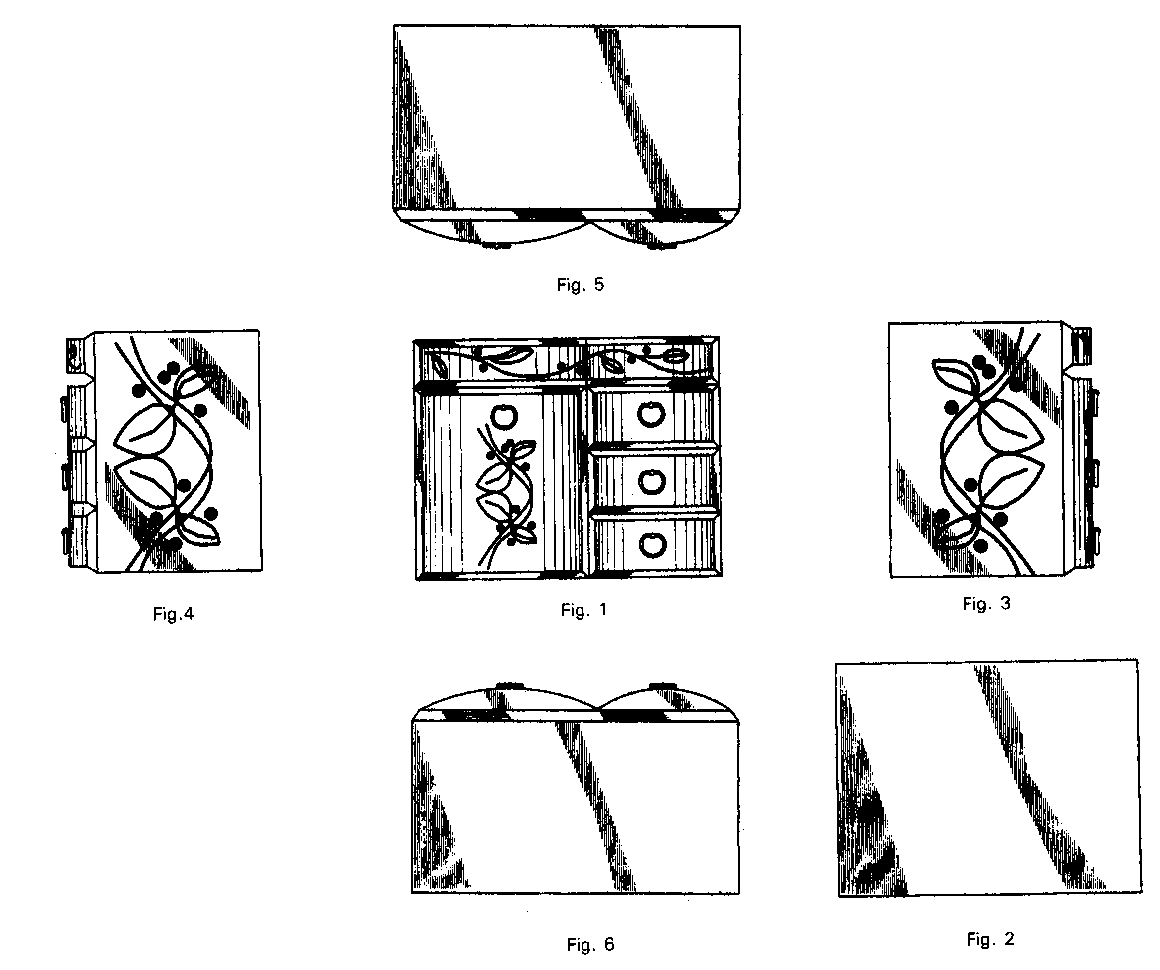
Disclosure Examples
Example 2-Disclosure of only the surfaces of an article that are visible during use (no bottom view or description necessary)
I, John Doe, have invented a new design for a jewelry cabinet, as set forth in the following specification. The claimed jewelry cabinet is used for storing jewelry and could sit on a bureau.
Fig. 1 is a front elevational view of a jewelry cabinet showing my new design;
Fig. 2 is a rear elevational view thereof;
Fig. 3 is a left side elevational view thereof;
Fig. 4 is a right side elevational view thereof;
Fig. 5 is a top plan view thereof.
I claim: the ornamental design for a jewelry cabinet as shown.
Drawing Disclosure:
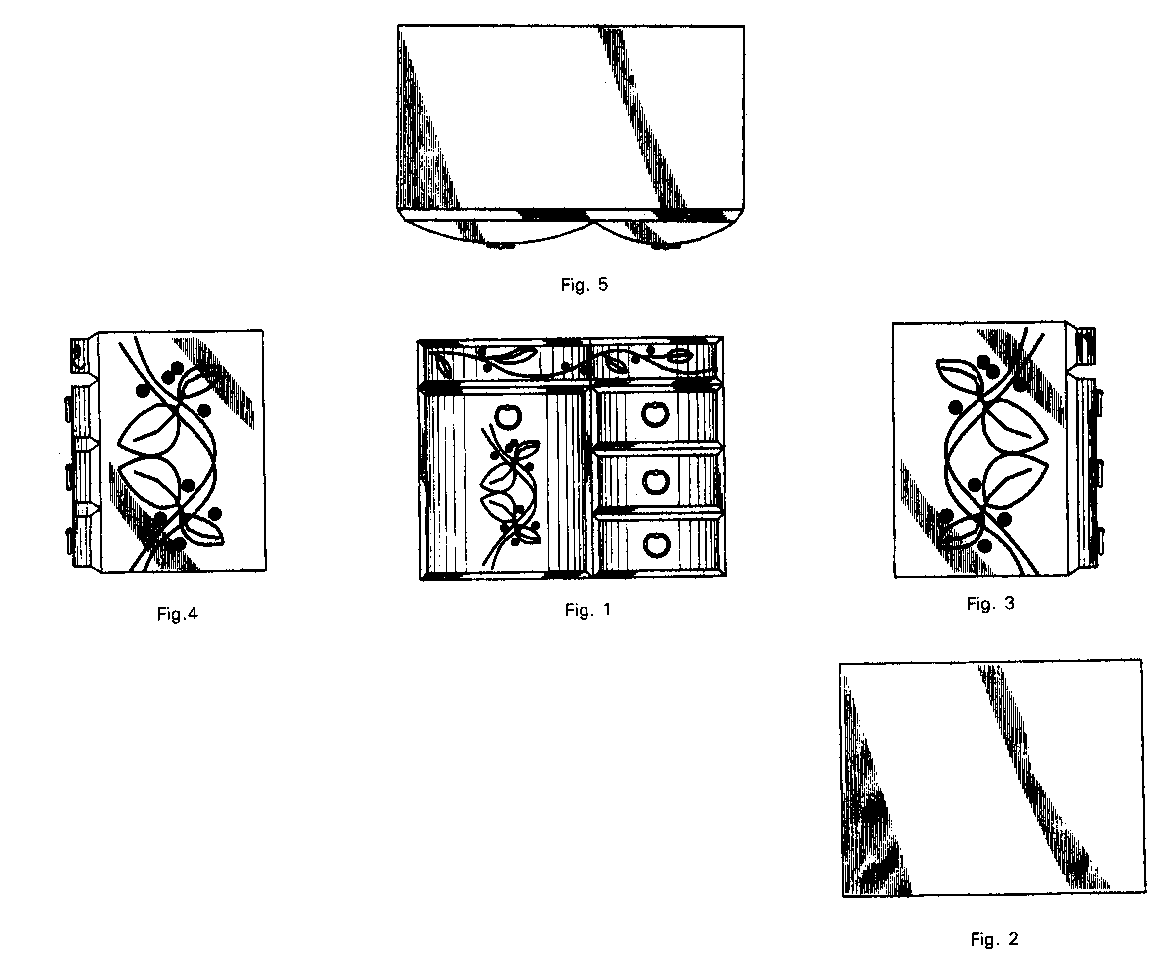
Disclosure Examples
Example 3-Disclosure of only the surfaces of an article that are visible during use - The rear view disclosed by description
I, John Doe, have invented a new design for a jewelry cabinet, as set forth in the following specification. The claimed jewelry cabinet is used for storing jewelry and could sit on a bureau.
Fig. 1 is a front elevational view of a jewelry cabinet showing my new design;
Fig. 2 is a left side elevational view thereof;
Fig. 3 is a right side elevational view thereof; and
Fig. 4 is a top plan view thereof.
The rear of the jewelry cabinet is flat and unornamented.
I claim: the ornamental design for a jewelry cabinet as shown and described.
Drawing Disclosure:
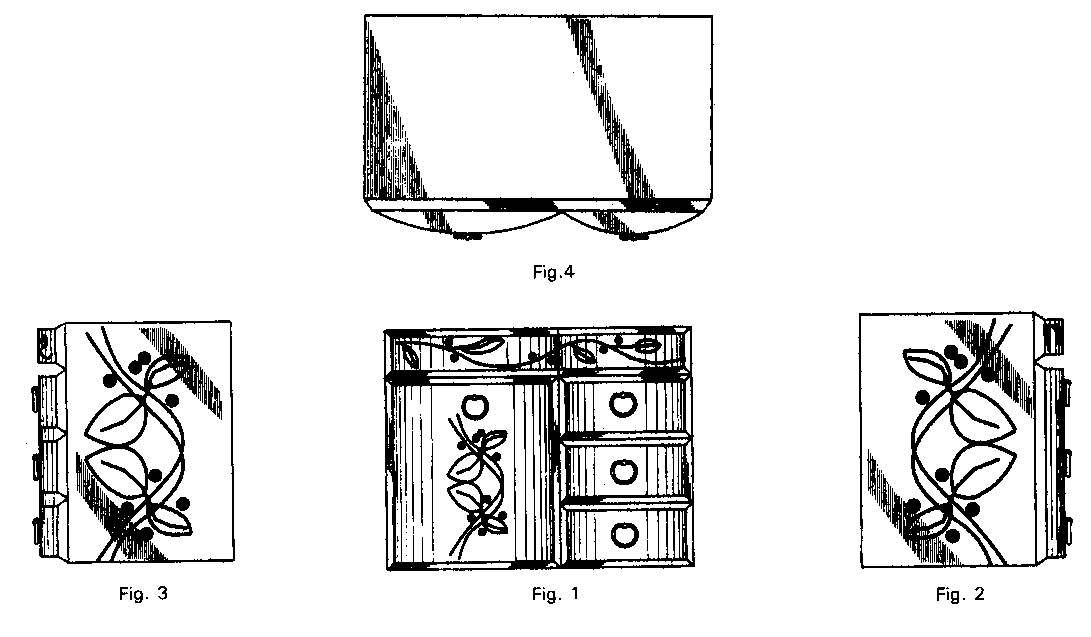
Disclosure Examples
Example 4-Disclosure of a surface pattern as claimed design, applied to an article
I, John Doe, have invented a new design for a surface pattern applied to a jewelry cabinet, as set forth in the following specification.
Fig. 1 is a front elevational view of a surface pattern applied to a jewelry cabinet showing my new design;
Fig. 2 is a left side elevational view thereof, the right side being a mirror image.
The jewelry cabinet is shown in broken lines for illustrative purposes only and forms no part of the claimed design.
I claim: the ornamental design for a surface pattern applied to a jewelry cabinet as shown and described.
Drawing Disclosure:
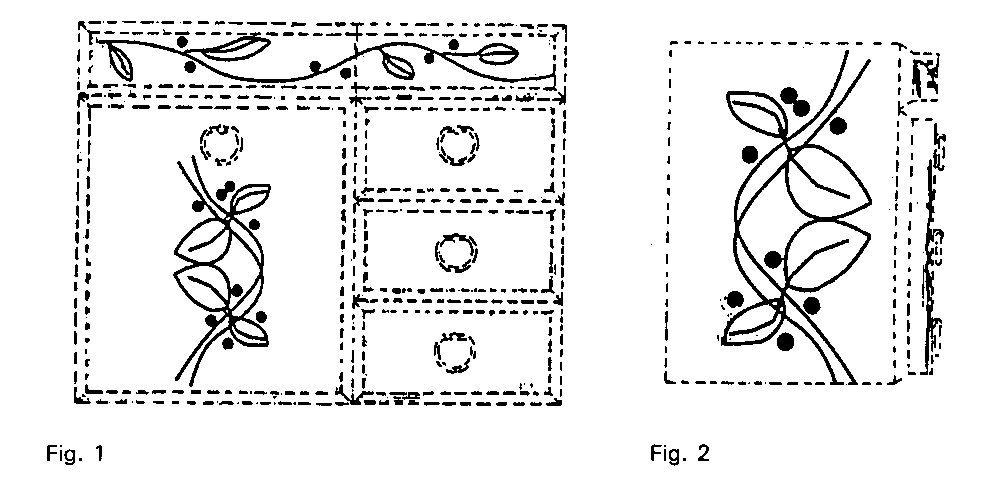
The preparation of a design patent application and the conducting of the proceedings in the USPTO to obtain the patent is an undertaking requiring the knowledge of patent law and rules and Patent and Trademark Office practice and procedures. A patent attorney or agent specially trained in this field is best able to secure the greatest patent protection to which applicant is entitled. It would be prudent to seek the services of a registered patent attorney or agent. Representation, however, is not required. A knowledgeable applicant may successfully prosecute his or her own application. However, while persons not skilled in this work may obtain a patent in many cases, there is no assurance that the patent obtained would adequately protect the particular design.
Of primary importance in a design patent application is the drawing disclosure, which illustrates the design being claimed. Unlike a utility application, where the "claim" describes the invention in a lengthy written explanation, the claim in a design patent application protects the overall visual appearance of the design, "described" in the drawings. It is essential that the applicant present a set of drawings (or photographs) of the highest quality which conform to the rules and standards which are reproduced in this guide. Changes to these drawings after the application has been filed, may introduce new matter, which is not permitted by law (35 U.S.C. 132). It is in applicant's best interest to ensure that the drawing disclosure is clear and complete prior to filing the application, since an incomplete or poorly prepared drawing may result in a fatally defective disclosure which cannot become a patent. It is recommended that applicant retain the services of a professional draftsperson who specializes in preparing design patent drawings. Examples of acceptable drawings and drawing disclosures are included in this Guide so that applicant will have some idea of what is required and can prepare the drawings accordingly.
Filing An Application
In addition to the drawing disclosure, certain other information is necessary. While no specific format is required, it is strongly suggested that applicant follow the formats presented to ensure that the application is complete.
When a complete design patent application, along with the appropriate filing fee, is received by the Office, it is assigned an Application Number and a Filing Date. A "Filing Receipt" containing this information is sent to the applicant. The application is then assigned to an examiner. Applications are examined in order of their filing date.
Examination
The actual "examination" entails checking for compliance with formalities, ensuring completeness of the drawing disclosure and a comparison of the claimed subject matter with the "prior art." "Prior art" consists of issued patents and published materials. If the claimed subject matter is found to be patentable, the application will be "allowed," and instructions will be provided to applicant for completing the process to permit issuance as a patent.
The examiner may reject the claim in the application if the disclosure cannot be understood or is incomplete, or if a reference or combination of references found in the prior art, shows the claimed design to be unpatentable. The examiner will then issue an Office action detailing the rejection and addressing the substantive matters which effect patentability.
This Office action may also contain suggestions by the examiner for amendments to the application. Applicant should keep this Office action for his or her files, and not send it back to the Office.
Response
If, after receiving an Office action, applicant elects to continue prosecution of the application, a timely reply to the action must be submitted. This reply should include a request for reconsideration or further examination of the claim, along with any amendments desired by the applicant, and must be in writing. The reply must distinctly and specifically point out the supposed errors in the Office action and must address every objection and/or rejection in the action. If the examiner has rejected the claim over prior art, a general statement by the applicant that the claim is patentable, without specifically pointing out how the design is patentable over the prior art, does not comply with the rules.
In all cases where the examiner has said that a reply to a requirement is necessary, or where the examiner has indicated patentable subject matter, the reply must comply with the requirements set forth by the examiner, or specifically argue each requirement as to why compliance should not be required.
In any communication with the Office, applicant should include the following items:
1. Application number (checked for accuracy).
2. Group art unit number (copied from filing receipt or the most recent Office action).
3. Filing date.
4. Name of the examiner who prepared the most recent Office action.
5. Title of invention.
It is applicant's responsibility to make sure that the reply is received by the Office prior to the expiration of the designated time period set for reply. This time period is set to run from the "Date Mailed," which is indicated on the first page of the Office action. If the reply is not received within the designated time period, the application will be considered abandoned. In the event that applicant is unable to reply within the time period set in the Office action, abandonment may be prevented if a reply is filed within six months from the mail date of the Office action provided a petition for extension of time and the fee set forth in 37 CFR § 1.17(a) are filed. The fee is determined by the amount of time requested, and increases as the length of time increases. These fees are set by Rule and could change at any time. An "Extension of Time" does not have to be obtained prior to the submission of a reply to an Office action; it may be mailed along with the reply. See insert for schedule of current fees. Note: an extension of time cannot be obtained when responding to a "Notice of Allowance and Fee(s) Due."
To ensure that a time period set for reply to an Office action is not missed; a "Certificate of Mailing" should be attached to the reply. This "Certificate" establishes that the reply is being mailed on a given date. It also establishes that the reply is timely, if it was mailed before the period for reply had expired, and if it is mailed with the United States Postal Service. A "Certificate of Mailing" is not the same as "Certified Mail." A suggested format for a Certificate of Mailing is as follows:
"I hereby certify that this correspondence is being deposited with the United States Postal Service as first class mail in an envelope addressed to: Commissioner for Patents, PO Box 1450, Alexandria, Virginia 22313-1450, on (DATE MAILED)"
(Name - Typed or Printed)
------------------------------------------
Signature__________________________________
Date______________________________________
If a receipt for any paper filed in the USPTO is desired, applicant should include a stamped, self-addressed postcard, which lists, on the message side applicant's name and address, the application number, and filing date, the types of papers submitted with the reply (i.e., 1 sheet of drawings, 2 pages of amendments, 1 page of an oath/declaration, etc.) This postcard will be stamped with the date of receipt by the mailroom and returned to applicant. This postcard will be applicant's evidence that the reply was received by the Office on that date.
If applicant changes his or her mailing address after filing an application, the Office must be notified in writing of the new address. Failure to do so will result in future communications being mailed to the old address, and there is no guarantee that these communications will be forwarded to applicant's new address. Applicant's failure to receive, and properly reply to these Office communications will result in the application being held abandoned. Notification of "Change of Address" should be made by separate letter, and a separate notification should be filed for each application.
Reconsideration
Upon submission of a reply to an Office action, the application will be reconsidered and further examined in view of applicant's remarks and any amendments included with the reply. The examiner will then either withdraw the rejection and allow the application or, if not persuaded by the remarks and/or amendments submitted, repeat the rejection and make it Final. Applicant may file an appeal with the Board of Patent Appeals and Interferences after given a final rejection or after the claim has been rejected twice. Applicant may also file a new application prior to the abandonment of the original application, claiming benefit of the earlier filing date. This will allow continued prosecution of the claim.
The two types of shading commonly employed in design patent application drawings are straight-line surface shading and stippling. Individually or in combination, they can effectively represent the character and contour of most surfaces.
Straight-line Surface Shading
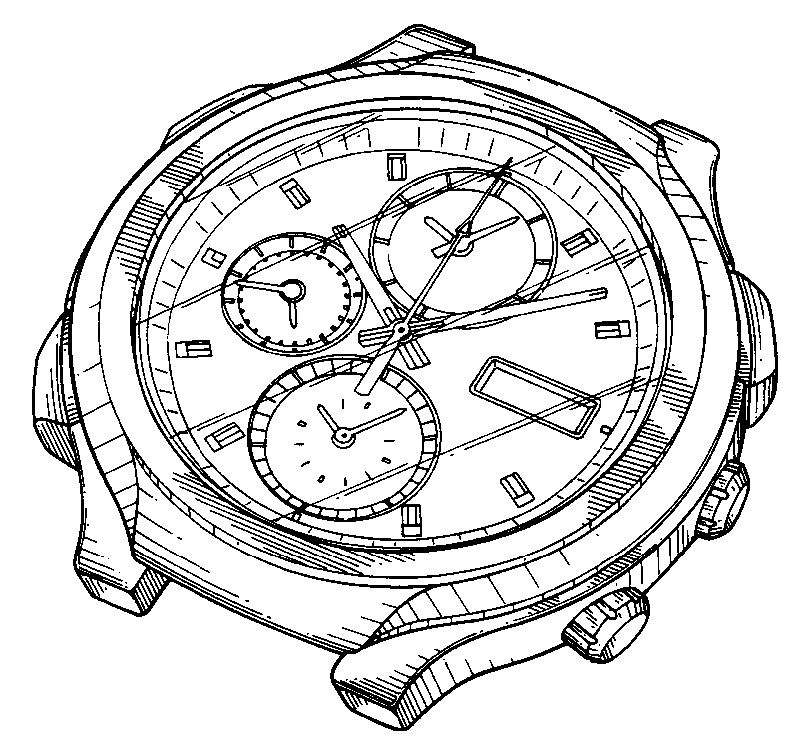
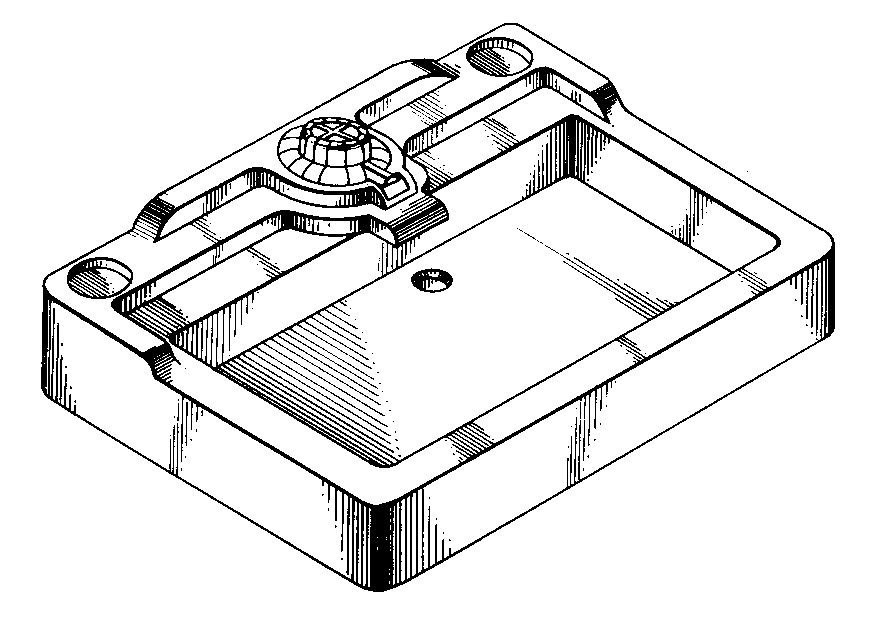
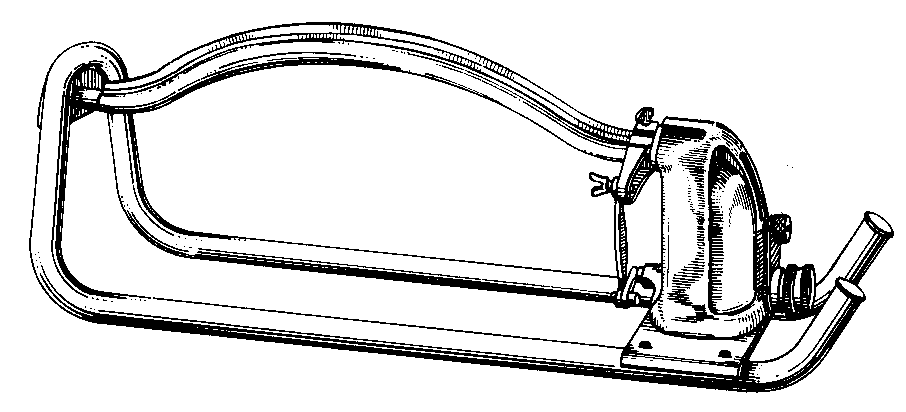
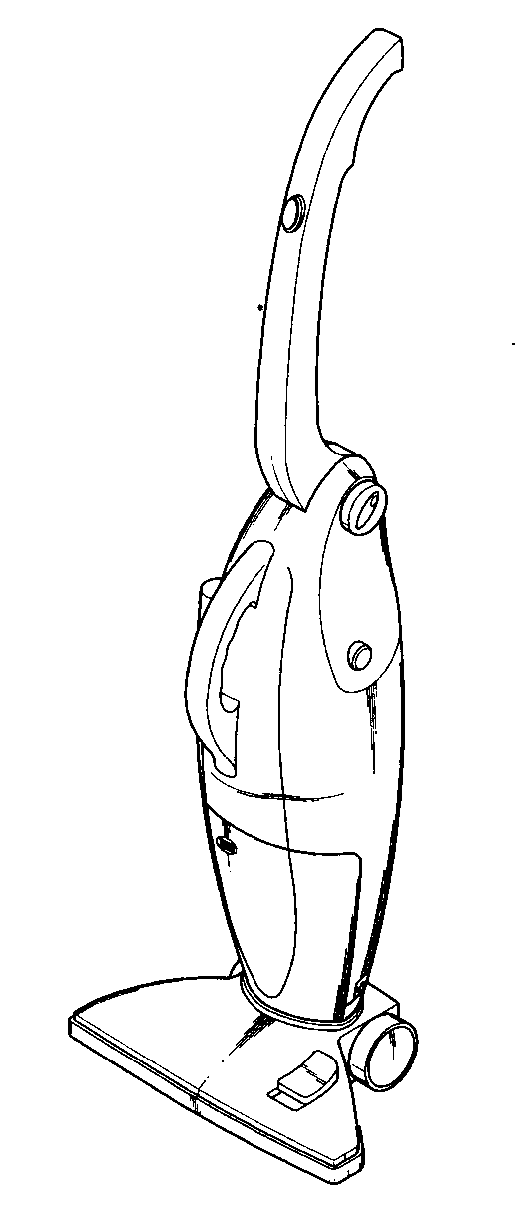
Stippling
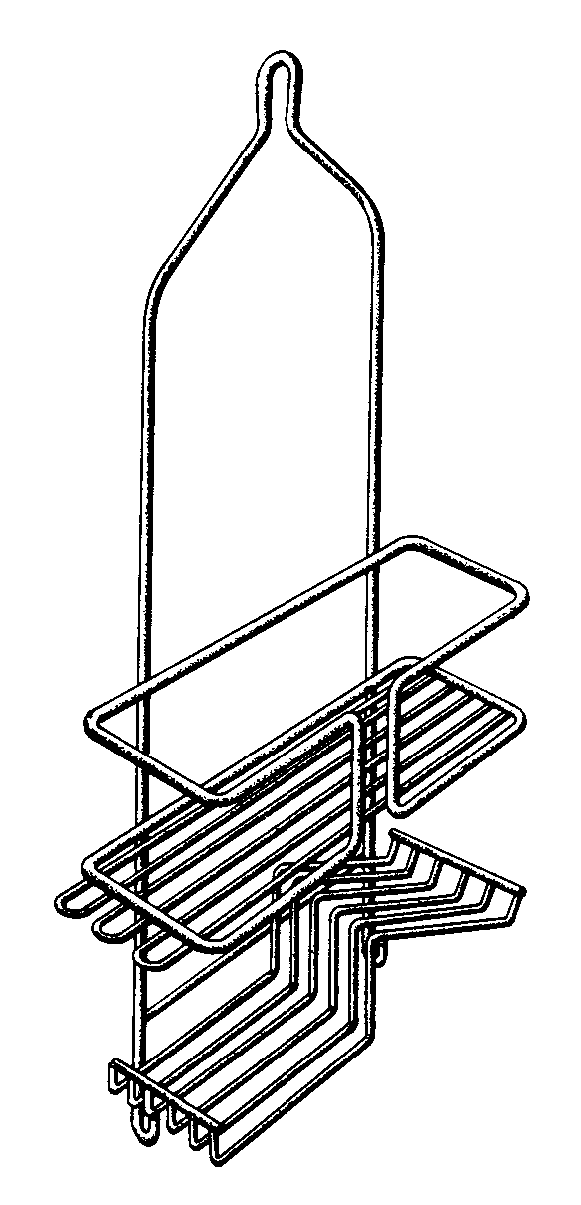

Combination of Straight Line Shading and Stippling
Note that both stippling and straight-line surface shading, while permissible on the same object to show surface contrast, should not be used together on the same surface.
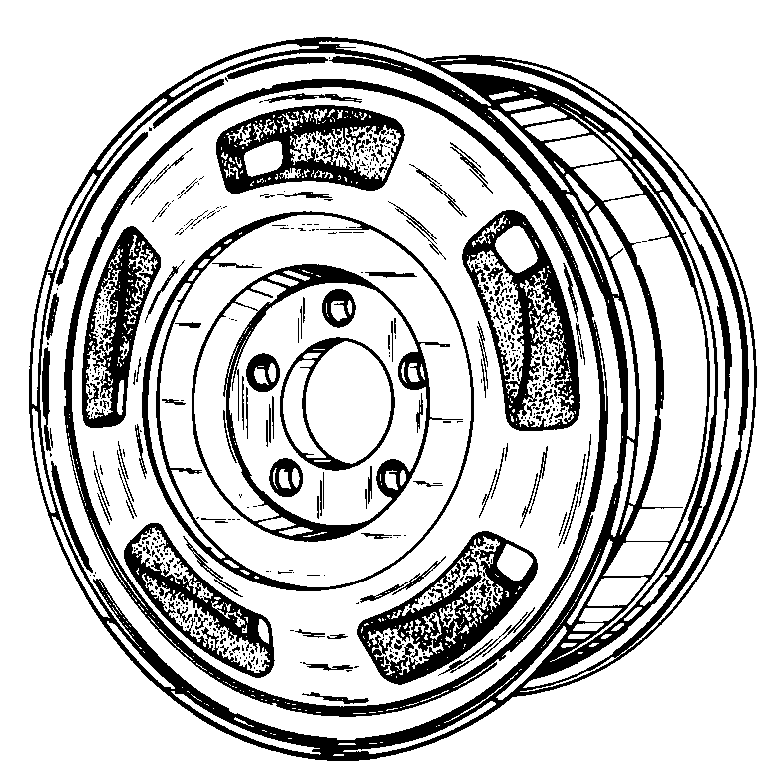
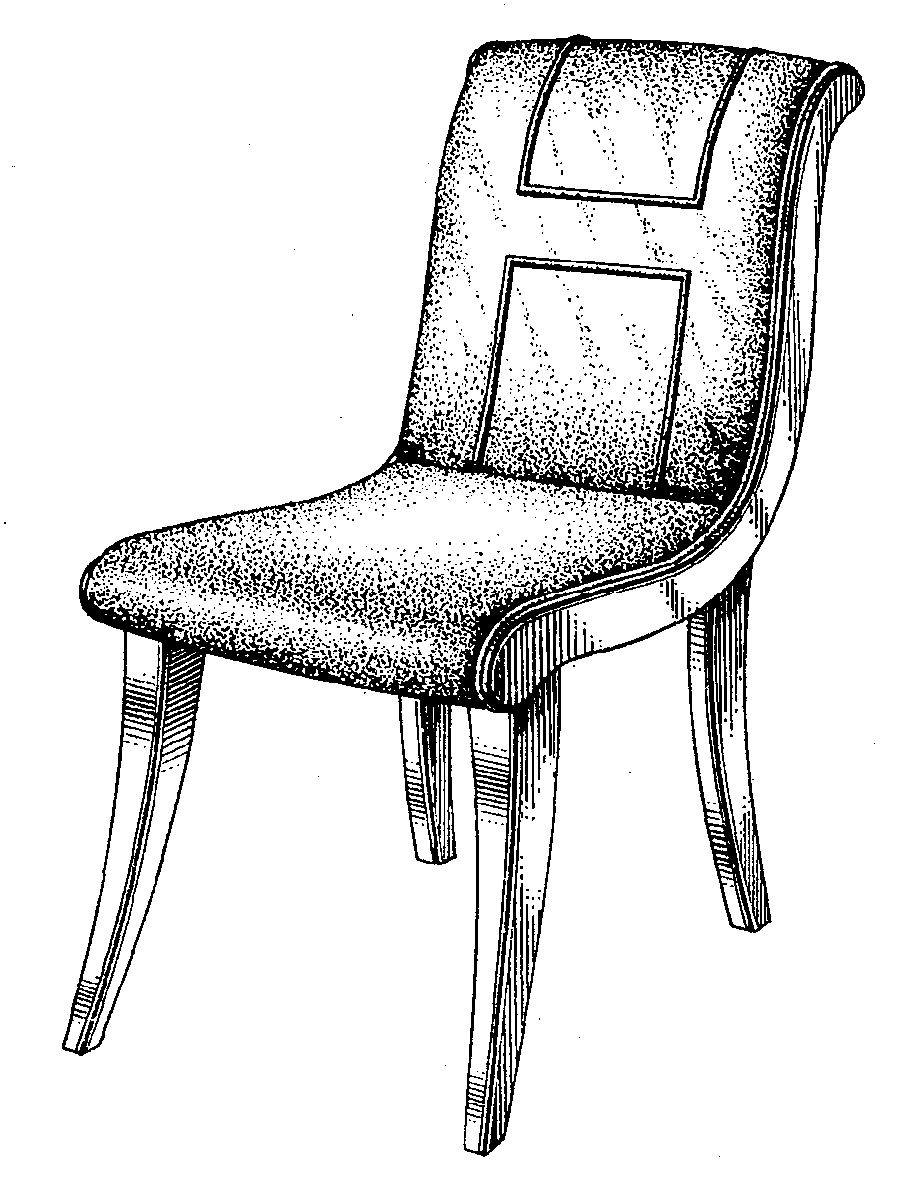
Transparent Materials
Note that elements visible behind transparent surfaces should be shown in light, full lines, not broken lines.
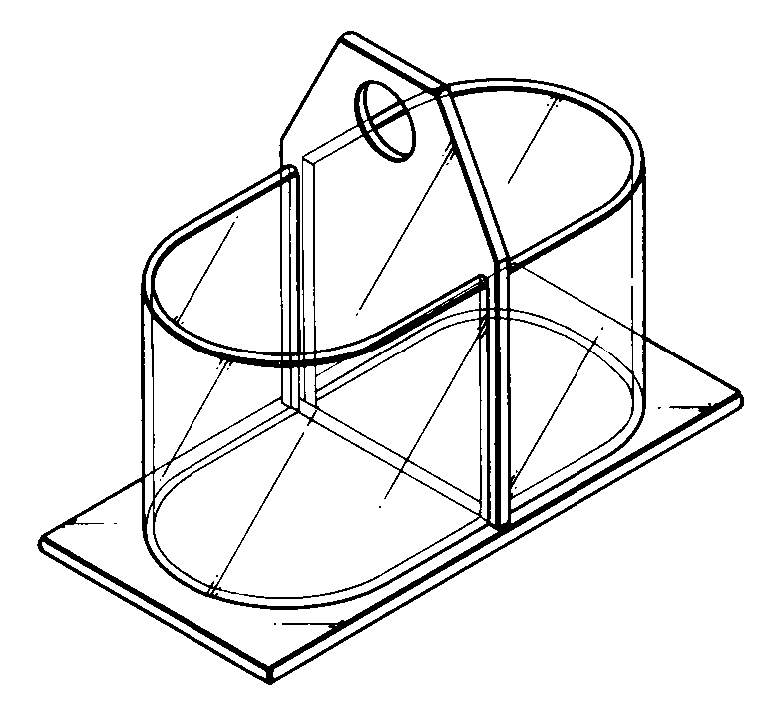
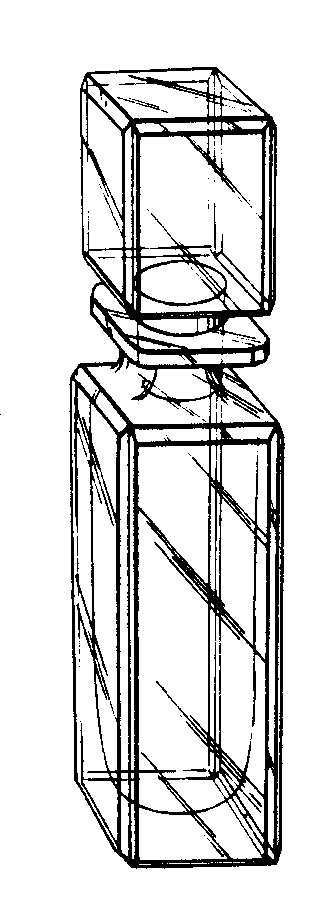
Broken Line Disclosure
Broken lines may be used to show environment and boundaries that form no part of the claimed design.
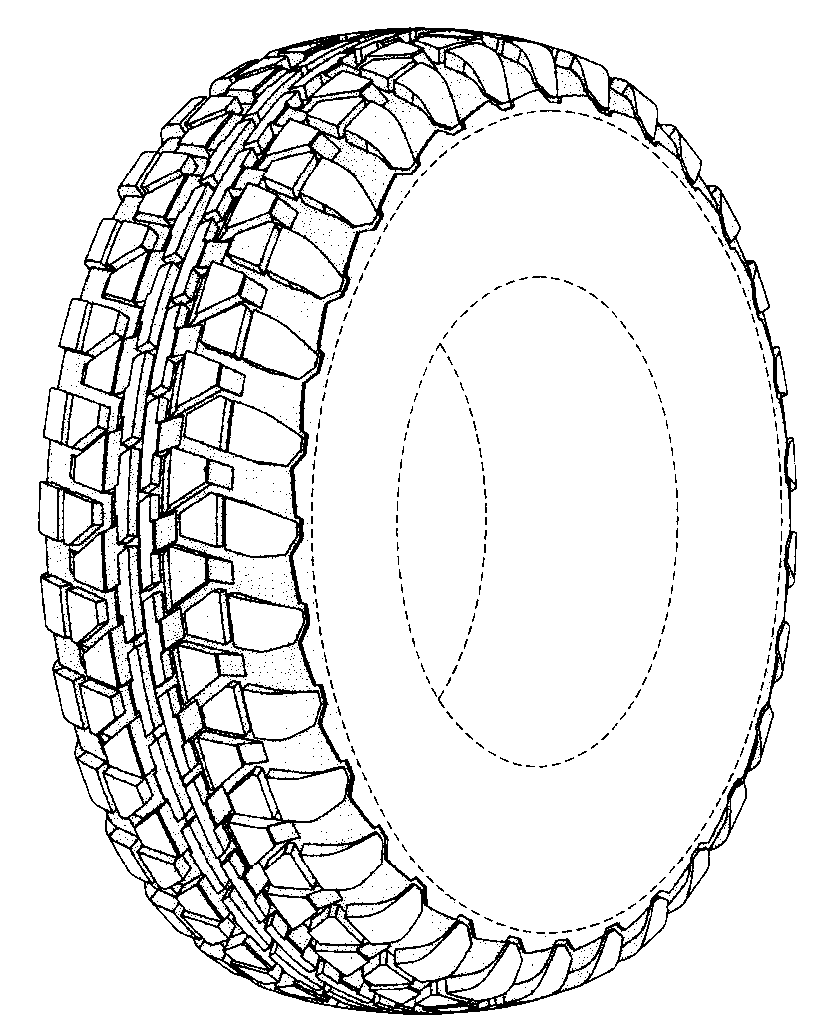
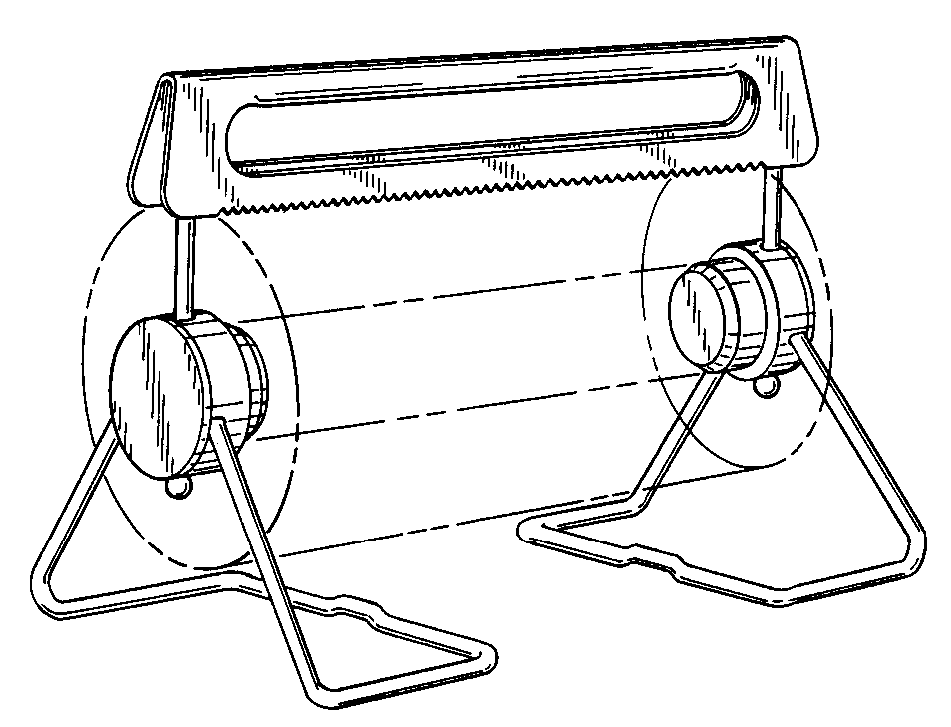
Exploded View
An exploded view is only supplementary to a fully assembled view. A bracket must be employed to show the association of elements.
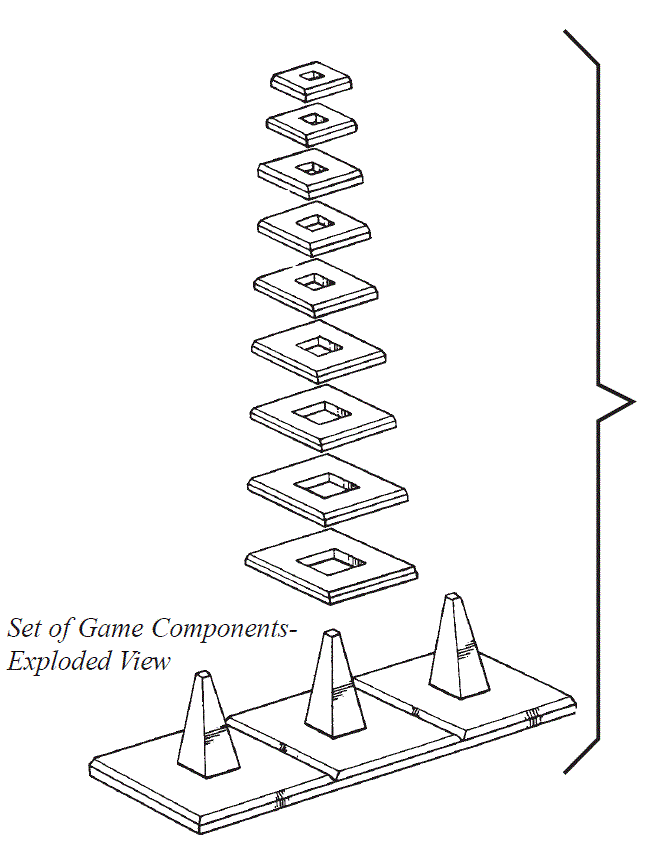
Set of Game Components- Fully Assembled View:
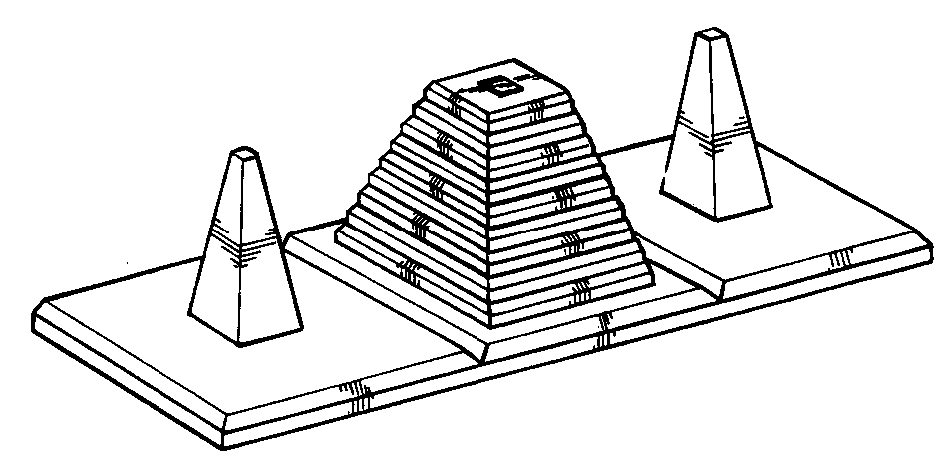
Alternate Positions
The alternate positions of a design, or an element of the design, must be shown in separate views.
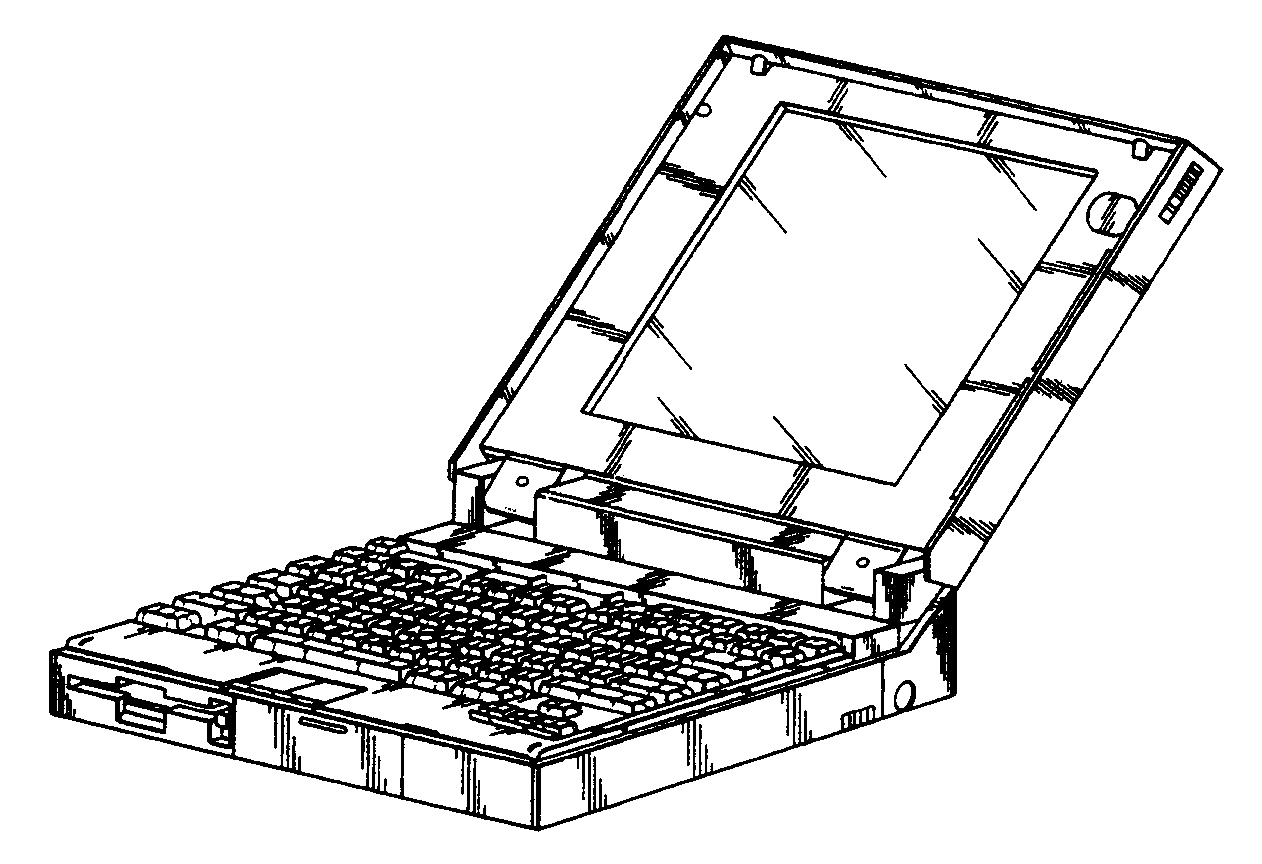
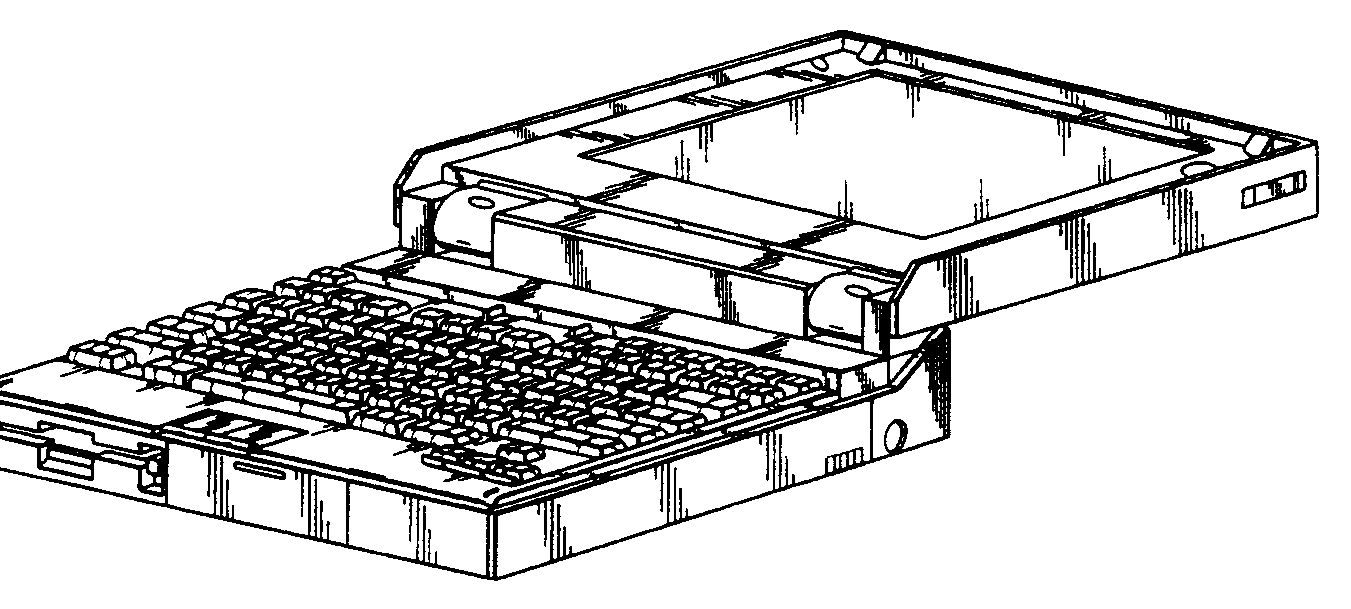
Article Shown Broken Away
A separation and a bracket may be used in an enlarged view when the full length of the article is shown in another view. Alternatively, when the article is consistently shown in the views with a break, the claim will be understood to be directed only to the design for the portions of the molding that are shown. A description in the specification must explain that the appearance of any portion of the article between the break lines forms no part of the claimed design.
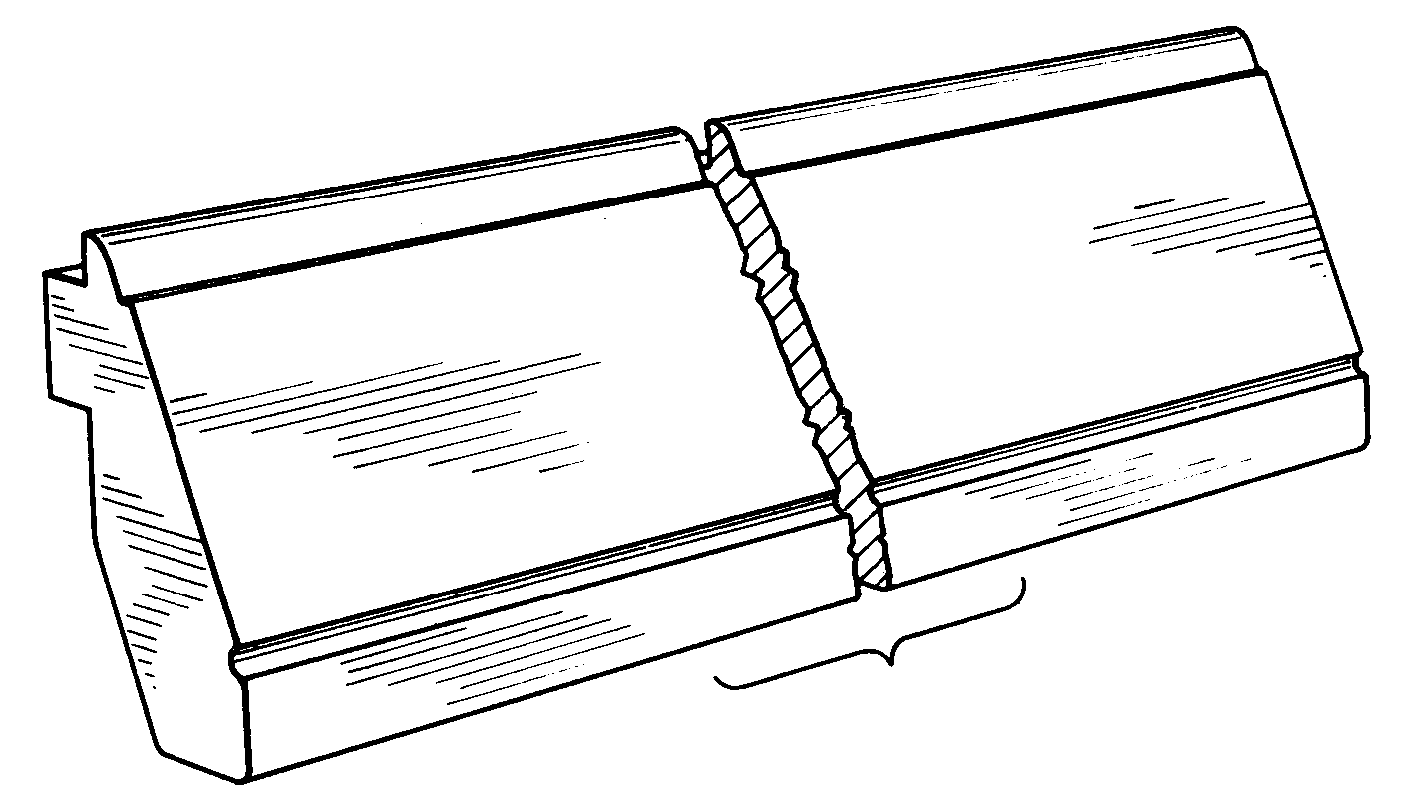
Cross-sectional View
Cross-sections may be employed to clarify the disclosure and to minimize the number of views.

Multiple Embodiments
Multiple embodiments of a single concept may be filed in one design application, so long as their appearance and shape are similar, as shown below.
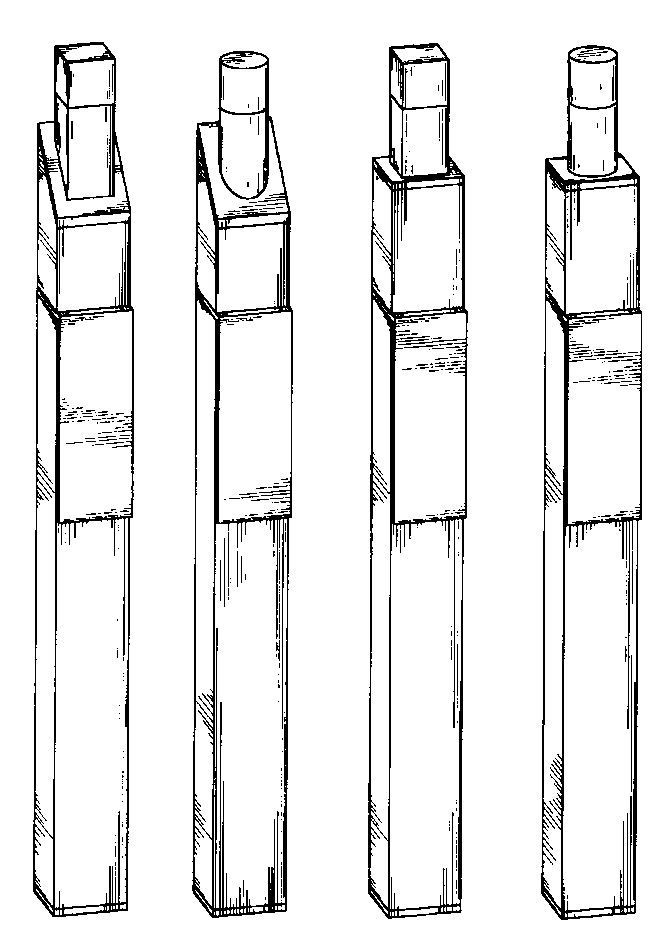
Graphical symbols for conventional elements may be used on the drawing when appropriate, subject to approval by the Office.
NOTES: In general, in lieu of a symbol, a conventional element, combination or circuit may be shown by an appropriately labeled rectangle, square or circle; abbreviations should not be used unless their meaning is evident and not confusing with the abbreviations used in the suggested symbols.
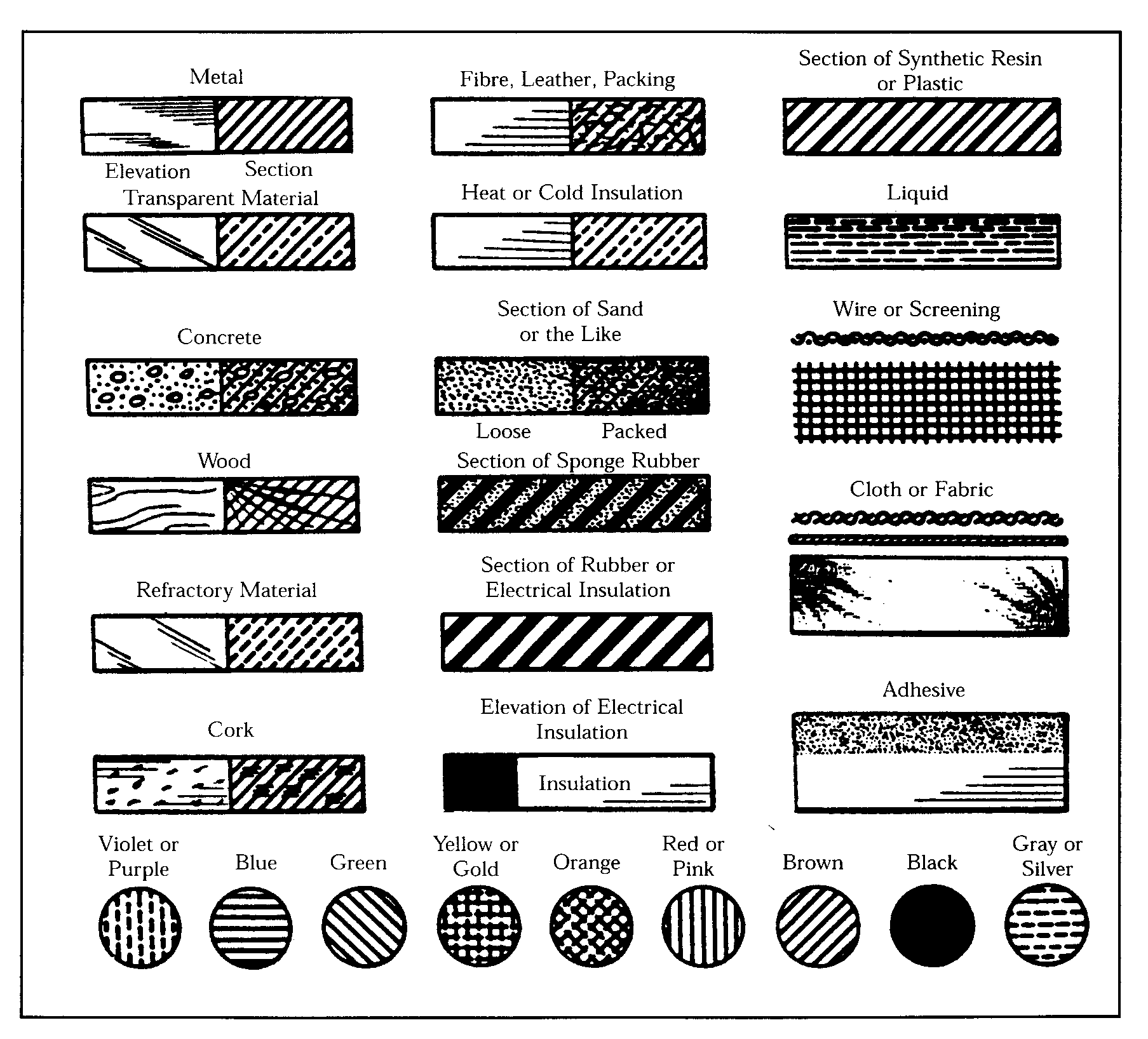
35 U.S.C. 102 Conditions for patentability; novelty and loss of right to patent
A person shall be entitled to a patent unless -
(a) the invention was known or used by others in this country, or patented or described in a printed publication in this or a foreign country, before the invention thereof by the applicant for patent, or
(b) the invention was patented or described in a printed publication in this or a foreign country or in public use or on sale in this country, more than one year prior to the date of the application for patent in the United States,
or
(c) he has abandoned the invention,
or
(d) the invention was first patented or caused to be patented, or was the subject of an inventor's certificate, by the applicant or his legal representatives or assigns in a foreign country prior to the date of the application for patent in this country on an application for patent or inventor's certificate filed more than twelve months before the filing of the application in the United States,
or
(e) the invention was described in - (1) an application for patent, published under section 122(b), by another filed in the United States before the invention by the applicant for patent or (2) a patent granted on an application for patent by another filed in the United States before the invention by the applicant for patent, except that an international application filed under the treaty defined in section 351(a) shall have the effects for the purposes of this subsection of an application filed in the United States only if the international application designated the United States and was published under Article 21(2) of such treaty in the English language; or
(f) he did not himself invent the subject matter sought to be patented,
or
(g) (1) during the course of an interference conducted under section 135 or section 291, another inventor involved therein establishes, to the extent permitted in section 104, that before such person's invention thereof the invention was made by such other inventor and not abandoned, suppressed, or concealed, or (2) before such person's invention thereof, the invention was made in this country by another inventor who had not abandoned, suppressed, or concealed it. In determining priority of invention under this subsection, there shall be considered not only the respective dates of conception and reduction to practice of the invention, but also the reasonable diligence of one who was first to conceive and last to reduce to practice, from a time prior to conception by the other.
35 U.S.C. 103 Conditions for patentability; non-obvious subject matter
(a) A patent may not be obtained though the invention is not identically disclosed or described as set forth in section 102 of this title, if the differences between the subject matter sought to be patented and the prior art are such that the subject matter as a whole would have been obvious at the time the invention was made to a person having ordinary skill in the art to which said subject matter pertains. Patentability shall not be negatived by the manner in which the invention was made.
(b) (1) Notwithstanding subsection (a), and upon timely election by the applicant for patent to proceed under this subsection, a biotechnological process using or resulting in a composition of matter that is novel under section 102 and nonobvious under subsection (a) of this section shall be considered nonobvious if-
(A) claims to the process and the composition of matter are contained in either the same application for patent or in separate applications having the same effective filing date;
and
(B) the composition of matter, and the process at the time it was invented, were owned by the same person or subject to an obligation of assignment to the same person.
(2) A patent issued on a process under paragraph (1)-
(A) shall also contain the claims to the composition of matter used in or made by that process,
or
(B) shall, if such composition of matter is claimed in another patent, be set to expire on the same date as such other patent, notwithstanding section 154.
(3) For purposes of paragraph (1), the term "biotechnological process" means-
(A) a process of genetically altering or otherwise inducing a single- or multi-celled organism to-
(i) express an exogenous nucleotide sequence,
(ii) inhibit, eliminate, augment, or alter expression of an endogenous nucleotide sequence,
or
(iii) express a specific physiological characteristic not naturally associated with said organism;
(B) cell fusion procedures yielding a cell line that expresses a specific protein, such as a monoclonal antibody;
and
(C) a method of using a product produced by a process defined by subparagraph (A) or (B), or a combination of subparagraphs (A) and (B).
(c)(1) Subject matter developed by another person, which qualifies as prior art only under one or more of subsections (e), (f), and (g) of section 102 of this title, shall not preclude patentability under this section where the subject matter and the claimed invention were, at the time the invention was made, owned by the same person or subject to an obligation of assignment to the same person.
(2) For purposes of this subsection, subject matter developed by another person and a claimed invention shall be deemed to have been owned by the same person or subject to an obligation of assignment to the same person if-
(A) the claimed invention was made by or on behalf of parties to a joint research agreement that was in effect on or before the date the claimed invention was made;
(B) the claimed invention was made as a result of activities undertaken within the scope of the joint research agreement; and
(C) the application for patent for the claimed invention discloses or is amended to disclose the names of the parties to the joint research agreement.
(3) For purposes of paragraph (2), the term "joint research agreement"means a written contract, grant, or cooperative agreement entered into by two or more persons or entities for the performance of experimental, developmental, or research work in the field of the claimed invention.
35 U.S.C. 112 Specification
The specification shall contain a written description of the invention, and of the manner and process of making and using it, in such full, clear, concise, and exact terms as to enable any person skilled in the art to which it pertains, or with which it is most nearly connected, to make and use the same, and shall set forth the best mode contemplated by the inventor of carrying out his invention.
The specification shall conclude with one or more claims particularly pointing out and distinctly claiming the subject matter, which the applicant regards as his invention.
A claim may be written in independent or, if the nature of the case admits, in dependent or multiple dependent form.
Subject to the following paragraph, a claim in dependent form shall contain a reference to a claim previously set forth and then specify a further limitation of the subject matter claimed. A claim in dependent form shall be construed to incorporate by reference all the limitations of the claim to which it refers.
A claim in multiple dependent form shall contain a reference, in the alternative only, to more than one claim previously set forth and then specify a further limitation of the subject matter claimed. A multiple dependent claim shall not serve as a basis for any other multiple dependent claim. A multiple dependent claim shall be construed to incorporate by reference all the limitations of the particular claim in relation to which it is being considered.
An element in a claim for a combination may be expressed as a means or step for performing a specified function without the recital of structure, material, or acts in support thereof, and such claim shall be construed to cover the corresponding structure, material, or acts described in the specification and equivalents thereof.
35 U.S.C. 132 Notice of rejection; reexamination
(a) Whenever, on examination, any claim for a patent is rejected, or any objection or requirement made, the Director shall notify the applicant thereof, stating the reasons for such rejection, or objection or requirement, together with such information and references as may be useful in judging of the propriety of continuing the prosecution of his application; and if after receiving such notice, the applicant persists in his claim for a patent, with or without amendment, the application shall be reexamined. No amendment shall introduce new matter into the disclosure of the invention.
(b) The Director shall prescribe regulations to provide for the continued examination of applications for patent at the request of the applicant. The Director may establish appropriate fees for such continued examination and shall provide a 50 percent reduction in such fees for small entities that qualify for reduced fees under section 41(h)(1) of this title.
35 U.S.C. 171 Patents for designs
Whoever invents any new, original, and ornamental design for an article of manufacture may obtain a patent therefor, subject to the conditions and requirements of this title.
The provisions of this title relating to patents for inventions shall apply to patents for designs, except as otherwise provided.
35 U.S.C. 172 Right of priority
The right of priority provided for by subsections (a) through (d) of section 119 of this title and the time specified in section 102(d) shall be six months in the case of designs. The right of priority provided for by section 119(e) of this title shall not apply to designs.
35 U.S.C. 173 Term of design patent
Patents for designs shall be granted for the term of fourteen years from the date of grant.
37 CFR 1.3 Business to be conducted with decorum and courtesy
Applicants and their attorneys or agents are required to conduct their business with the Patent and Trademark Office with decorum and courtesy. Papers presented in violation of this requirement will be submitted to the Director and will not be entered. Complaints against examiners and other employees must be made in correspondence separate from other papers.
37 CFR 1.63 Oath or declaration
(a) An oath or declaration filed under § 1.51(b)(2), as a part of a nonprovisional application must:
(1) Be executed, i.e., signed, in accordance with either § 1.66 or § 1.68. There is no minimum age for a person to be qualified to sign, but the person must be competent to sign, i.e., understand the document that the person is signing;
(2) Identify each inventor by full name, including the family name, and at least one given name without abbreviation together with any other given name or initial;
(3) Identify the country of citizenship of each inventor;
and
(4) State that the person making the oath or declaration believes the named inventor or inventors to be the original and first inventor or inventors of the subject matter which is claimed and for which a patent is sought.
(b) In addition to meeting the requirements of paragraph (a) of this section, the oath or declaration must also:
(1) Identify the application to which it is directed;
(2) State that the person making the oath or declaration has reviewed and understands the contents of the application, including the claims, as amended by any amendment specifically referred to in the oath or declaration;
and
(3) State that the person making the oath or declaration acknowledges the duty to disclose to the Office all information known to the person to be material to patentability as defined in § 1.56.
(c) Unless such information is supplied on an application data sheet in accordance with § 1.76, the oath, or declaration must also identify:
(1) The mailing address, and the residence if an inventor lives at a location which is different from where the inventor customarily receives mail, of each inventor;
and
(2) Any foreign application for patent (or inventor's certificate) for which a claim for priority is made pursuant to § 1.55, and any foreign application having a filing date before that of the application on which priority is claimed, by specifying the application number, country, day, month, and year of its filing.
(d) (1) A newly executed oath or declaration is not required under § 1.51(b)(2) and § 1.53(f) in a continuation or divisional application, provided that:
(i) The prior nonprovisional application contained an oath or declaration as prescribed by paragraphs (a) through (c) of this section;
(ii) The continuation or divisional application was filed by all or by fewer than all of the inventors named in the prior application;
(iii) The specification and drawings filed in the continuation or divisional application contain no matter that would have been new matter in the prior application;
and
(iv) A copy of the executed oath or declaration filed in the prior application, showing the signature or an indication thereon that it was signed, is submitted for the continuation or divisional application.
(2) The copy of the executed oath or declaration submitted under this paragraph for a continuation or divisional application must be accompanied by a statement requesting the deletion of the name or names of the person or persons who are not inventors in the continuation or divisional application.
(3) Where the executed oath or declaration of which a copy is submitted for a continuation or divisional application was originally filed in a prior application accorded status under § 1.47, the copy of the executed oath or declaration for such prior application must be accompanied by:
(i) A copy of the decision granting a petition to accord § 1.47 status to the prior application, unless all inventors or legal representatives have filed an oath or declaration to join in an application accorded status under § 1.47 of which the continuation or divisional application claims a benefit under 35 U.S.C. 120, 121, or 365(c);
and
(ii) If one or more inventor(s) or legal representative(s) who refused to join in the prior application or could not be found or reached has subsequently joined in the prior application or another application of which the continuation or divisional application claims a benefit under 35 U.S.C. 120, 121, or 365(c), a copy of the subsequently executed oath(s) or declaration(s) filed by the inventor or legal representative to join in the application.
(4) Where the power of attorney or correspondence address was changed during the prosecution of the prior application, the change in power of attorney (or authorization of agent) or correspondence address must be identified in the continuation or divisional application. Otherwise, the Office may not recognize in the continuation or divisional application the change of power of attorney or correspondence address during the prosecution of the prior application.
(5) A newly executed oath or declaration must be filed in a continuation or divisional application naming an inventor not named in the prior application.
(e) A newly executed oath or declaration must be filed in any continuation-in-part application, which application may name all, more, or fewer than all of the inventors named in the prior application.
37 CFR 1.76 Application data sheet
(a) Application data sheet. An application data sheet is a sheet or sheets, that may be voluntarily submitted in either provisional or nonprovisional applications, which contains bibliographic data, arranged in a format specified by the Office. An application data sheet must be titled "Application Data Sheet" and must contain all of the section headings listed in paragraph (b) of this section, with any appropriate data for each section heading. If an application data sheet is provided, the application data sheet is part of the provisional or nonprovisional application for which it has been submitted.
(b) Bibliographic data. Bibliographic data as used in paragraph (a) of this section includes:
(1) Applicant information. This information includes the name, residence, mailing address, and citizenship of each applicant (§ 1.41(b)). The name of each applicant must include the family name, and at least one given name without abbreviation together with any other given name or initial. If the applicant is not an inventor, this information also includes the applicant' s authority (§§ 1.42, 1.43, and 1.47) to apply for the patent on behalf of the inventor.
(2) Correspondence information. This information includes the correspondence address, which may be indicated by reference to a customer number, to which correspondence is to be directed (see § 1.33(a)).
(3) Application information. This information includes the title of the invention, a suggested classification, by class and subclass, the Technology Center to which the subject matter of the invention is assigned, the total number of drawing sheets, a suggested drawing figure for publication (in a nonprovisional application), any docket number assigned to the application, the type of application (e.g., utility, plant, design, reissue, provisional), whether the application discloses any significant part of the subject matter of an application under a secrecy order pursuant to § 5.2 of this chapter (see § 5.2(c)), and, for plant applications, the Latin name of the genus and species of the plant claimed, as well as the variety denomination. The suggested classification and Technology Center information should be supplied for provisional applications whether or not claims are present. If claims are not present in a provisional application, the suggested classification and Technology Center should be based upon the disclosure.
(4) Representative information. This information includes the registration number of each practitioner having a power of attorney in the application (preferably by reference to a customer number). Providing this information in the application data sheet does not constitute a power of attorney in the application (see § 1.32).
(5) Domestic priority information. This information includes the application number, the filing date, the status (including patent number if available), and relationship of each application for which a benefit is claimed under 35 U.S.C. 119(e), 120, 121, or 365(c). Providing this information in the application data sheet constitutes the specific reference required by 35 U.S.C. 119(e) or 120, and § 1.78(a)(2) or § 1.78(a)(4), and need not otherwise be made part of the specification.
(6) Foreign priority information. This information includes the application number, country, and filing date of each foreign application for which priority is claimed, as well as any foreign application having a filing date before that of the application for which priority is claimed. Providing this information in the application data sheet constitutes the claim for priority as required by 35 U.S.C. 119(b) and § 1.55(a).
(7) Assignee information. This information includes the name (either person or juristic entity) and address of the assignee of the entire right, title, and interest in an application. Providing this information in the application data sheet does not substitute for compliance with any requirement of part 3 of this chapter to have an assignment recorded by the Office.
(c) Supplemental application data sheets. Supplemental application data sheets:
(1) May be subsequently supplied prior to payment of the issue fee either to correct or update information in a previously submitted application data sheet, or an oath or declaration under § 1.63 or § 1.67, except that inventorship changes are governed by § 1.48, correspondence changes are governed by § 1.33(a), and citizenship changes are governed by § 1.63 or § 1.67;
and
(2) Must be titled "Supplemental Application Data Sheet," include all of the section headings listed in paragraph (b) of this section, include all appropriate data for each section heading, and must identify the information that is being changed, preferably with underlining for insertions, and strike-through or brackets for text removed.
(d) Inconsistencies between application data sheet and other documents. For inconsistencies between information that is supplied by both an application data sheet under this section and other documents.
(1) The latest submitted information will govern notwithstanding whether supplied by an application data sheet, an amendment to the specification, a designation of a correspondence address, or by a § 1.63 or § 1.67 oath or declaration, except as provided by paragraph (d)(3) of this section;
(2) The information in the application data sheet will govern when the inconsistent information is supplied at the same time by an amendment to the specification, a designation of correspondence address, or a § 1.63 or § 1.67 oath or declaration, except as provided by paragraph (d)(3) of this section;
(3) The oath or declaration under § 1.63 or § 1.67 governs inconsistencies with the application data sheet in the naming of inventors (§ 1.41(a)(1)) and setting forth their citizenship (35 U.S.C. 115);
(4) The Office will capture bibliographic information from the application data sheet (notwithstanding whether an oath or declaration governs the information). Thus, the Office shall generally, for example, not look to an oath or declaration under § 1.63 to see if the bibliographic information contained therein is consistent with the bibliographic information captured from an application data sheet (whether the oath or declaration is submitted prior to or subsequent to the application data sheet). Captured bibliographic information derived from an application data sheet containing errors may be corrected if applicant submits a request therefor and a supplemental application data sheet.
37 CFR 1.84 Standards for drawings
(a) Drawings. There are two acceptable categories for presenting drawings in utility and design patent applications.
(1) Black ink. Black and white drawings are normally required. India ink, or its equivalent that secures solid black lines, must be used for drawings;
or
(2) Color. On rare occasions, color drawings may be necessary as the only practical medium by which to disclose the subject matter sought to be patented in a utility or design patent application or the subject matter of a statutory invention registration. The color drawings must be of sufficient quality such that all details in the drawings are reproducible in black and white in the printed patent. Color drawings are not permitted in international applications (see PCT Rule 11.13), or in an application, or copy thereof, submitted under the Office electronic filing system. The Office will accept color drawings in utility or design patent applications and statutory invention registrations only after granting a petition filed under this paragraph explaining why the color drawings are necessary. Any such petition must include the following:
(i) The fee set forth in § 1.17(h);
(ii) Three (3) sets of color drawings;
and
(iii) An amendment to the specification to insert (unless the specification contains or has been previously amended to contain) the following language as the first paragraph of the brief description of the drawings:
The patent or application file contains at least one drawing executed in color. Copies of this patent or patent application publication with color drawing(s) will be provided by the Office upon request and payment of the necessary fee.
(b) Photographs.
(1) Black and white. Photographs, including photocopies of photographs, are not ordinarily permitted in utility and design patent applications. The Office will accept photographs in utility and design patent applications, however, if photographs are the only practicable medium for illustrating the claimed invention. For example, photographs or photomicrographs of: electrophoresis gels, blots (e.g., immunological, western, Southern, and northern), auto- radiographs, cell cultures (stained and unstained), histological tissue cross sections (stained and unstained), animals, plants, in vivo imaging, thin layer chromatography plates, crystalline structures, and, in a design patent application, ornamental effects, are acceptable. If the subject matter of the application admits of illustration by a drawing, the examiner may require a drawing in place of the photograph. The photographs must be of sufficient quality so that all details in the photographs are reproducible in the printed patent.
(2) Color photographs. Color photographs will be accepted in utility and design patent applications if the conditions for accepting color drawings and black and white photographs have been satisfied. See paragraphs (a)(2) and (b)(1) of this section.
(c) Identification of drawings. Identifying indicia, if provided, should include the title of the invention, inventor's name, and application number, or docket number (if any) if an application number has not been assigned to the application. If this information is provided, it must be placed on the front of each sheet and centered within the top margin.
(d) Graphic forms in drawings. Chemical or mathematical formulae, tables, and waveforms may be submitted as drawings and are subject to the same requirements as drawings. Each chemical or mathematical formula must be labeled as a separate figure, using brackets when necessary, to show that information is properly integrated. Each group of waveforms must be presented as a single figure, using a common vertical axis with time extending along the horizontal axis. Each individual waveform discussed in the specification must be identified with a separate letter designation adjacent to the vertical axis.
(e) Type of paper. Drawings submitted to the Office must be made on paper, which is flexible, strong, white, smooth, non-shiny, and durable. All sheets must be reasonably free from cracks, creases, and folds. Only one side of the sheet may be used for the drawing. Each sheet must be reasonably free from erasures and must be free from alterations, overwritings, and interlineations. Photographs must be developed on paper meeting the sheet-size requirements of paragraph (f) of this section and the margin requirements of paragraph (g) of this section. See paragraph (b) of this section for other requirements for photographs.
(f) Size of paper. All drawing sheets in an application must be the same size. One of the shorter sides of the sheet is regarded as its top. The size of the sheets on which drawings are made must be:
(1) 21.0 cm. by 29.7 cm. (DIN size A4), or
(2) 21.6 cm. by 27.9 cm. (8 1/2 by 11 inches).
(g) Margins. The sheets must not contain frames around the sight (i.e., the usable surface), but should have scan target points (i.e., cross hairs) printed on two cater-corner margin corners. Each sheet must include a top margin of at least 2.5 cm. (1 inch), a left side margin of at least 2.5 cm. (1 inch), a right side margin of at least 1.5 cm. (5/8 inch), and a bottom margin of at least 1.0 cm. (3/8 inch), thereby leaving a sight no greater than 17.0 cm. by 26.2 cm. on 21.0 cm. by 29.7 cm. (DIN size A4) drawing sheets, and a sight no greater than 17.6 cm. by 24.4 cm. (6 15/16 by 9 5/8 inches) on 21.6 cm. by 27.9 cm. (8 1/2 by 11 inch) drawing sheets.
(h) Views. The drawing must contain as many views as necessary to show the invention. The views may be plan, elevation, section, or perspective views. Detail views of portions of elements, on a larger scale if necessary, may also be used. All views of the drawing must be grouped together and arranged on the sheet(s) without wasting space, preferably in an upright position, clearly separated from one another, and must not be included in the sheets containing the specifications, claims, or abstract. Views must not be connected by projection lines and must not contain centerlines. Waveforms of electrical signals may be connected by dashed lines to show the relative timing of the waveforms.
(1) Exploded views. Exploded views, with the separated parts embraced by a bracket, to show the relationship or order of assembly of various parts are permissible. When an exploded view is shown in a figure, which is on the same sheet as another figure, the exploded view should be placed in brackets.
(2) Partial views. When necessary, a view of a large machine or device in its entirety may be broken into partial views on a single sheet, or extended over several sheets if there is no loss in facility of understanding the view. Partial views drawn on separate sheets must always be capable of being linked edge to edge so that no partial view contains parts of another partial view. A smaller scale view should be included showing the whole formed by the partial views and indicating the positions of the parts shown. When a portion of a view is enlarged for magnification purposes, the view and the enlarged view must each be labeled as separate views.
(i) Where views on two or more sheets form, in effect, a single complete view, the views on the several sheets must be so arranged that the complete figure can be assembled without concealing any part of any of the views appearing on the various sheets.
(ii) A very long view may be divided into several parts placed one above the other on a single sheet. However, the relationship between the different parts must be clear and unambiguous.
(3) Sectional views. The plane upon which a sectional view is taken should be indicated on the view from which the section is cut by a broken line. The ends of the broken line should be designated by Arabic or Roman numerals corresponding to the view number of the sectional view, and should have arrows to indicate the direction of sight. Hatching must be used to indicate section portions of an object, and must be made by regularly spaced oblique parallel lines spaced sufficiently apart to enable the lines to be distinguished without difficulty. Hatching should not impede the clear reading of the reference characters and lead lines. If it is not possible to place reference characters outside the hatched area, the hatching may be broken off wherever reference characters are inserted. Hatching must be at a substantial angle to the surrounding axes or principal lines, preferably 45°. A cross section must be set out and drawn to show all of the materials as they are shown in the view from which the cross section was taken. The parts in cross section must show proper material(s) by hatching with regularly spaced parallel oblique strokes, the space between strokes being chosen on the basis of the total area to be hatched. The various parts of a cross section of the same item should be hatched in the same manner and should accurately and graphically indicate the nature of the material(s) that is illustrated in cross section. The hatching of juxtaposed different elements must be angled in a different way. In the case of large areas, hatching may be confined to an edging drawn around the entire inside of the outline of the area to be hatched. Different types of hatching should have different conventional meanings as regards the nature of a material seen in cross section.
(4) Alternate position. A moved position may be shown by a broken line superimposed upon a suitable view if this can be done without crowding; otherwise, a separate view must be used for this purpose.
(5) Modified forms. Modified forms of construction must be shown in separate views.
(i) Arrangement of views. One view must not be placed upon another or within the outline of another. All views on the same sheet should stand in the same direction and, if possible, stand so that they can be read with the sheet held in an upright position. If views wider than the width of the sheet are necessary for the clearest illustration of the invention, the sheet may be turned on its side so that the top of the sheet, with the appropriate top margin to be used as the heading space, is on the right-hand side. Words must appear in a horizontal, left-to-right fashion when the page is either upright or turned so that the top becomes the right side, except for graphs utilizing standard scientific convention to denote the axis of abscissas (of X) and the axis of ordinates (of Y).
(j) Front page view. The drawing must contain as many views as necessary to show the invention. One of the views should be suitable for inclusion on the front page of the patent application publication and patent as the illustration of the invention. Views must not be connected by projection lines and must not contain centerlines. Applicant may suggest a single view (by figure number) for inclusion on the front page of the patent application publication and patent.
(k) Scale. The scale to which a drawing is made must be large enough to show the mechanism without crowding when the drawing is reduced in size to two-thirds in reproduction. Indications such as "actual size" or "scale 1/2" on the drawings are not permitted since these lose their meaning with reproduction in a different format.
(l) Character of lines, numbers, and letters. All drawings must be made by a process, which will give them satisfactory reproduction characteristics. Every line, number, and letter must be durable, clean, black (except for color drawings), sufficiently dense and dark, and uniformly thick and well defined. The weight of all lines and letters must be heavy enough to permit adequate reproduction. This requirement applies to all lines however fine, to shading, and to lines representing cut surfaces in sectional views. Lines and strokes of different thickness may be used in the same drawing where different thicknesses have a different meaning.
(m) Shading. The use of shading in views is encouraged if it aids in understanding the invention and if it does not reduce legibility. Shading is used to indicate the surface or shape of spherical, cylindrical, and conical elements of an object. Flat parts may also be lightly shaded. Such shading is preferred in the case of parts shown in perspective, but not for cross sections. See paragraph (h)(3) of this section. Spaced lines for shading are preferred. These lines must be thin, as few in number as practicable, and they must contrast with the rest of the drawings. As a substitute for shading, heavy lines on the shade side of objects can be used except where they superimpose on each other or obscure reference characters. Light should come from the upper left corner at an angle of 45°??Surface delineations should preferably be shown by proper shading. Solid black shading areas are not permitted, except when used to represent bar graphs or color.
(n) Symbols. Graphical drawing symbols may be used for conventional elements when appropriate. The elements for which such symbols and labeled representations are used must be adequately identified in the specification. Known devices should be illustrated by symbols, which have a universally recognized conventional meaning and are generally accepted in the art. Other symbols, which are not universally recognized, may be used, subject to approval by the Office, if they are not likely to be confused with existing conventional symbols, and if they are readily identifiable.
(o) Legends. Suitable descriptive legends may be used subject to approval by the Office, or may be required by the examiner where necessary for understanding of the drawing. They should contain as few words as possible.
(p) Numbers, letters, and reference characters.
(1) Reference characters (numerals are preferred), sheet numbers, and view numbers must be plain and legible, and must not be used in association with brackets or inverted commas, or enclosed within outlines, e.g., encircled. They must be oriented in the same direction as the view so as to avoid having to rotate the sheet. Reference characters should be arranged to follow the profile of the object depicted.
(2) The English alphabet must be used for letters, except where another alphabet is customarily used, such as the Greek alphabet to indicate angles, wavelengths, and mathematical formulas.
(3) Numbers, letters, and reference characters must measure at least .32 cm. (1/8 inch) in height. They should not be placed in the drawing so as to interfere with its comprehension. Therefore, they should not cross or mingle with the lines. They should not be placed upon hatched or shaded surfaces. When necessary, such as indicating a surface or cross section, a reference character may be underlined and a blank space may be left in the hatching or shading where the character occurs so that it appears distinct.
(4) The same part of an invention appearing in more than one view of the drawing must always be designated by the same reference character, and the same reference character must never be used to designate different parts.
(5) Reference characters not mentioned in the description shall not appear in the drawings. Reference characters mentioned in the description must appear in the drawings.
(q) Lead lines. Lead lines are those lines between the reference characters and the details referred to. Such lines may be straight or curved and should be as short as possible. They must originate in the immediate proximity of the reference character and extend to the feature indicated. Lead lines must not cross each other. Lead lines are required for each reference character except for those, which indicate the surface or cross section on which they are placed. Such a reference character must be underlined to make it clear that a lead line has not been left out by mistake. Lead lines must be executed in the same way as lines in the drawing. See paragraph (l) of this section.
(r) Arrows. Arrows may be used at the ends of lines, provided that their meaning is clear, as follows:
(1) On a lead line, a freestanding arrow to indicate the entire section towards which it points;
(2) On a lead line, an arrow touching a line to indicate the surface shown by the line looking along the direction of the arrow;
or
(3) To show the direction of movement.
(s) Copyright or Mask Work Notice. A copyright or mask work notice may appear in the drawing, but must be placed within the sight of the drawing immediately below the figure representing the copyright or mask work material and be limited to letters having a print size of .32 cm. to .64 cm. (1/8 to 1/4 inches) high. The content of the notice must be limited to only those elements provided for by law. For example, "©1983 John Doe" (17 U.S.C. 401) and "*M* John Doe" (17 U.S.C. 909) would be properly limited and, under current statutes, legally sufficient notices of copyright and mask work, respectively. Inclusion of a copyright or mask work notice will be permitted only if the authorization language set forth in § 1.71(e) is included at the beginning (preferably as the first paragraph) of the specification.
(t) Numbering of sheets of drawings. The sheets of drawings should be numbered in consecutive Arabic numerals, starting with 1, within the sight as defined in paragraph (g) of this section. These numbers, if present, must be placed in the middle of the top of the sheet, but not in the margin. The numbers can be placed on the right-hand side if the drawing extends too close to the middle of the top edge of the usable surface. The drawing sheet numbering must be clear and larger than the numbers used as reference characters to avoid confusion. The number of each sheet should be shown by two Arabic numerals placed on either side of an oblique line, with the first being the sheet number and the second being the total number of sheets of drawings, with no other marking.
(u) Numbering of views.
(1) The different views must be numbered in consecutive Arabic numerals, starting with 1, independent of the numbering of the sheets and, if possible, in the order in which they appear on the drawing sheet(s). Partial views intended to form one complete view, on one or several sheets, must be identified by the same number followed by a capital letter. View numbers must be preceded by the abbreviation "FIG." Where only a single view is used in an application to illustrate the claimed invention, it must not be numbered and the abbreviation "FIG." must not appear.
(2) Numbers and letters identifying the views must be simple and clear and must not be used in association with brackets, circles, or inverted commas. The view numbers must be larger than the numbers used for reference characters.
(v) Security markings. Authorized security markings may be placed on the drawings provided they are outside the sight, preferably centered in the top margin.
(w) Corrections. Any corrections on drawings submitted to the Office must be durable and permanent.
(x) Holes. No holes should be made by applicant in the drawing sheets.
(y) Types of drawings. See § 1.152 for design drawings, § 1.165 for plant drawings, and § 1.174 for reissue drawings.
37 CFR 1.121 Manner of making amendments in application.
(a) Amendments in applications, other than reissue applications. Amendments in applications, other than reissue applications, are made by filing a paper, in compliance with § 1.52, directing that specified amendments be made.
(b) Specification. Amendments to the specification, other than the claims, computer listings (§ 1.96) and sequence listings (§ 1.825), must be made by adding, deleting or replacing a paragraph, by replacing a section, or by a substitute specification, in the manner specified in this section.
(1) Amendment to delete, replace, or add a paragraph. Amendments to the specification, including amendment to a section heading or the title of the invention which are considered for amendment purposes to be an amendment of a paragraph, must be made by submitting:
(i) An instruction, which unambiguously identifies the location, to delete one or more paragraphs of the specification, replace a paragraph with one or more replacement paragraphs, or add one or more paragraphs;
(ii) The full text of any replacement paragraph with markings to show all the changes relative to the previous version of the paragraph. The text of any added subject matter must be shown by underlining the added text. The text of any deleted matter must be shown by strike-through except that double brackets placed before and after the deleted characters may be used to show deletion of five or fewer consecutive characters. The text of any deleted subject matter must be shown by being placed within double brackets if strikethrough cannot be easily perceived;
(iii) The full text of any added paragraphs without any underlining; and
(iv) The text of a paragraph to be deleted must not be presented with strike-through or placed within double brackets. The instruction to delete may identify a paragraph by its paragraph number or include a few words from the beginning, and end, of the paragraph, if needed for paragraph identification purposes.
(2) Amendment by replacement section. If the sections of the specification contain section headings as provided in § 1.77(b), § 1.154(b), or § 1.163(c), amendments to the specification, other than the claims, may be made by submitting:
(i) A reference to the section heading along with an instruction, which unambiguously identifies the location, to delete that section of the specification and to replace such deleted section with a replacement section; and;
(ii) A replacement section with markings to show all changes relative to the previous version of the section. The text of any added subject matter must be shown by underlining the added text. The text of any deleted matter must be shown by strike-through except that double brackets placed before and after the deleted characters may be used to show deletion of five or fewer consecutive characters. The text of any deleted subject matter must be shown by being placed within double brackets if strike-through cannot be easily perceived.
(3) Amendment by substitute specification. The specification, other than the claims, may also be amended by submitting:
(i) An instruction to replace the specification; and
(ii) A substitute specification in compliance with §§ 1.125(b) and (c).
(4) Reinstatement of previously deleted paragraph or section. A previously deleted paragraph or section may be reinstated only by a subsequent amendment adding the previously deleted paragraph or section.
(5) Presentation in subsequent amendment document. Once a paragraph or section is amended in a first amendment document, the paragraph or section shall not be represented in a subsequent amendment document unless it is amended again or a substitute specification is provided.
(c) Claims. Amendments to a claim must be made by rewriting the entire claim with all changes (e.g., additions and deletions) as indicated in this subsection, except when the claim is being canceled. Each amendment document that includes a change to an existing claim, cancellation of an existing claim or addition of a new claim, must include a complete listing of all claims ever presented, including the text of all pending and withdrawn claims, in the application. The claim listing, including the text of the claims, in the amendment document will serve to replace all prior versions of the claims, in the application. In the claim listing, the status of every claim must be indicated after its claim number by using one of the following identifiers in a parenthetical expression: (Original), (Currently amended), (Canceled), (Withdrawn), (Previously presented), (New), and (Not entered).
(1) Claim listing. All of the claims presented in a claim listing shall be presented in ascending numerical order. Consecutive claims having the same status of "canceled" or "not entered" may be aggregated into one statement (e.g., Claims 1-5 (canceled)). The claim listing shall commence on a separate sheet of the amendment document and the sheet(s) that contain the text of any part of the claims shall not contain any other part of the amendment.
(2) When claim text with markings is required. All claims being currently amended in an amendment paper shall be presented in the claim listing, indicate a status of "currently amended," and be submitted with markings to indicate the changes that have been made relative to the immediate prior version of the claims. The text of any added subject matter must be shown by underlining the added text. The text of any deleted matter must be shown by strike-through except that double brackets placed before and after the deleted characters may be used to show deletion of five or fewer consecutive characters. The text of any deleted subject matter must be shown by being placed within double brackets if strike-through cannot be easily perceived. Only claims having the status of "currently amended," or "withdrawn" if also being amended, shall include markings. If a withdrawn claim is currently amended, its status in the claim listing may be identified as "withdrawn- currently amended."
(3) When claim text in clean version is required. The text of all pending claims not being currently amended shall be presented in the claim listing in clean version, i.e., without any markings in the presentation of text. The presentation of a clean version of any claim having the status of "original," "withdrawn" or "previously presented" will constitute an assertion that it has not been changed relative to the immediate prior version, except to omit markings that may have been present in the immediate prior version of the claims of the status of "withdrawn" or "previously presented." Any claim added by amendment must be indicated with the status of "new" and presented in clean version, i.e., without any underlining.
(4) When claim text shall not be presented; canceling a claim.
(i) No claim text shall be presented for any claim in the claim listing with the status of "canceled" or "not entered."
(ii) Cancellation of a claim shall be effected by an instruction to cancel a particular claim number. Identifying the status of a claim in the claim listing as "canceled" will constitute an instruction to cancel the claim.
(5) Reinstatement of previously canceled claim. A claim which was previously canceled may be reinstated only by adding the claim as a "new" claim with a new claim number.
(d) Drawings: One or more application drawings shall be amended in the following manner: Any changes to an application drawing must be in compliance with § 1.84 and must be submitted on a replacement sheet of drawings which shall be an attachment to the amendment document and, in the top margin, labeled "Replacement Sheet". Any replacement sheet of drawings shall include all of the figures appearing on the immediate prior version of the sheet, even if only one figure is amended. Any new sheet of drawings containing an additional figure must be labeled in the top margin as "New Sheet". All changes to the drawings shall be explained, in detail, in either the drawing amendment or remarks section of the amendment paper.
(1) A marked-up copy of any amended drawing figure, including annotations indicating the changes made, may be included. The marked-up copy must be clearly labeled as "Annotated Sheet" and must be presented in the amendment or remarks section that explains the change to the drawings.
(2) A marked-up copy of any amended drawing figure, including annotations indicating the changes made, must be provided when required by the examiner.
(e) Disclosure consistency. The disclosure must be amended, when required by the Office, to correct inaccuracies of description and definition, and to secure substantial correspondence between the claims, the remainder of the specification, and the drawings.
(f) No new matter. No amendment may introduce new matter into the disclosure of an application.
(g) Exception for examiner's amendments. Changes to the specification, including the claims, of an application made by the Office in an examiner's amendment may be made by specific instructions to insert or delete subject matter set forth in the examiner's amendment by identifying the precise point in the specification or the claim(s) where the insertion or deletion is to be made. Compliance with paragraphs (b)(1), (b)(2), or (c) of this section is not required.
(h) Amendment sections. Each section of an amendment document (e.g., amendment to the claims, amendme nt to the specification, replacement drawings, and remarks) must begin on a separate sheet.
(i) Amendments in reissue applications. Any amendment to the description and claims in reissue applications must be made in accordance with § 1.173.
(j) Amendments in reexamination proceedings. Any proposed amendment to the description and claims in patents involved in reexamination proceedings must be made in accordance with § 1.530.
(k) Amendments in provisional applications. Amendments in provisional applications are not usually made. If an amendment is made to a provisional application, however, it must comply with the provisions of this section. Any amendments to a provisional application shall be placed in the provisional application file but may not be entered.
37 CFR 1.152 Design drawings
The design must be represented by a drawing that complies with the requirements of § 1.84 and must contain a sufficient number of views to constitute a complete disclosure of the appearance of the design. Appropriate and adequate surface shading should be used to show the character or contour of the surfaces represented. Solid black surface shading is not permitted except when used to represent the color black as well as color contrast. Broken lines may be used to show visible environmental structure, but may not be used to show hidden planes and surfaces that cannot be seen through opaque materials. Alternate positions of a design component, illustrated by full and broken lines in the same view are not permitted in a design drawing. Photographs and ink drawings are not permitted to be combined as formal drawings in one application. Photographs submitted in lieu of ink drawings in design patent applications must not disclose environmental structure but must be limited to the design claimed for the article.
37 CFR 1.153 Title, description and claim, oath or declaration
(a) The title of the design must designate the particular article. No description, other than a reference to the drawing, is ordinarily required. The claim shall be in formal terms to the ornamental design for the article (specifying name) as shown, or as shown and described. More than one claim is neither required nor permitted.
(b) The oath or declaration required of the applicant must comply with § 1.63.
37 CFR 1.154 Arrangement of application elements in a design application
(a) The elements of the design application, if applicable, should appear in the following order:
(1) Design application transmittal form.
(2) Fee transmittal form.
(3) Application data sheet (see § 1.76).
(4) Specification.
(5) Drawings or photographs.
(6) Executed oath or declaration (see § 1.153(b)).
(b) The specification should include the following sections in order:
(1) Preamble, stating the name of the applicant, title of the design, and a brief description of the nature and intended use of the article in which the design is embodied.
(2) Cross-reference to related applications (unless included in the application data sheet).
(3) Statement regarding federally sponsored research or development.
(4) Description of the figure or figures of the drawing.
(5) Feature description.
(6) A single claim.
(c) The text of the specification sections defined in paragraph (b) of this section, if applicable, should be preceded by a section heading in uppercase letters without underlining or bold type.
37 CFR 1.155 Expedited examination of design applications
(a) The applicant may request that the Office expedite the examination of a design application. To qualify for expedited examination:
(1) The application must include drawings in compliance with § 1.84;
(2) The applicant must have conducted a pre-examination search; and
(3) The applicant must file a request for expedited examination including:
(i) The fee set forth in § 1.17(k);
and
(ii) A statement that a pre-examination search was conducted. The statement must also indicate the field of search and include an information disclosure statement in compliance with § 1.98.
(b) The Office will not examine an application that is not in condition for examination (e.g., missing basic filing fee) even if the applicant files a request for expedited examination under this section.
Design patent
In the United States, a design patent is a form of legal protection granted to the ornamental design of a functional item. Design patents are a type of industrial design right. Ornamental designs of jewelry, furniture, beverage containers (Fig. 1) and computer icons are examples of objects that are covered by design patents.
A similar concept, a registered design, can be obtained in other countries. In Kenya, Japan, South Korea and Hungary, industrial designs are registered after performing an official novelty search. In the countries of the European Community, one needs to only pay an official fee and meet other formal requirements for registration (e.g. Community design at EUIPO, Germany, France, Spain).
For the member states of WIPO, cover is afforded by registration at WIPO and examination by the designated member states in accordance with the Geneva Act of the Hague Agreement.
Contents
Protections[edit]
A US design patent covers the ornamental design for an object having practical utility. An object with a design that is substantially similar to the design claimed in a design patent cannot be made, used, copied or imported into the United States without the permission of the patent holder. The copy does not have to be exact for the patent to be infringed. It only has to be substantially similar.[2] Design patents with line drawings cover only the features shown as solid lines. Items shown as dotted lines are not covered. This is one of the reasons Apple was awarded a jury verdict in the US case of Apple v. Samsung. Apple's patent showed much of their iPhone design as broken lines. It didn't matter if Samsung was different in those areas. The fact that the solid lines of the patent were the same as Samsung's design meant that Samsung infringed the Apple design patent.[1]
Design patents are subject to both the novelty and non-obviousness standards of the patent code. However, because design patents are not measured based on the utility of the designs to which they are directed, there is an open question as to how to measure the non-obviousness of an ornamental design.[3]
Computer images[edit]
Both novel fonts and computer icons can be covered by design patents. Icons are only covered, however, when they are displayed on a computer screen, thus making them part of an article of manufacture with practical utility.[4] Screen layouts can also be protected with design patents.[5]
Publication of application[edit]
In China, Canada, Japan, South Africa, and the United States,[6] a design patent application is not published and is kept secret until granted.
In Brazil, the applicant can request that the application be kept in secrecy for a period of 180 days from the filing date. This will also delay the prosecution and granting of the application for 180 days.
In Japan, an applicant can request that a design be kept secret for a period of up 3 years after the registration has been granted.
Notable design patents[edit]
- In 1842, George Bruce was awarded the first design patent, U.S. Patent D1. The design patent was for a new font.
- In 1879, Auguste Bartholdi was awarded design patent U.S. Patent D11,023 for the Statue of Liberty. This patent covered the sale of small copies of the statue. Proceeds from the sale of the statues helped raise money to build the full statue in New York harbor.
- In 1919, three design patents were granted for the badge of the American Legion, U.S. Patent D54,296; the badge of the American Legion Women's Auxiliary, U.S. Patent D55,398; and the badge of the Sons of the American Legion, U.S. Patent D92,187. The original terms of these patents were to have expired in 1933, but Congress has continually extended their protection.[7] The patents were extended for an additional fourteen-year term by an amendment to the National Defense Authorization Act in 2007 that passed the Senate on June 22, 2006.[8]
- In 1936, Frank A. Redford was awarded U.S. Patent D98,617 for the Wigwam Motel.
- Apple Inc. owns various patents regarding the design of the iPhone smartphone line and its related products.[9]
Other forms of protection[edit]
Utility patents[edit]
US utility patents protect the functionality of a given item. Providing the maintenance fees are paid, utility patents are generally valid for up to 20 years from the date of filing (with some exceptions).[10]
Design patents cover the ornamental nonfunctional design of an item. Design patents can be invalidated if the design has practical utility (e.g. the shape of a gear). Design patents are valid for 14 years from the date of issue if filed prior to May 13, 2015, or 15 years from the date of issue if filed on or after May 13, 2015.[11][12] There are no maintenance fees.
"In general terms, a “utility patent” protects the way an article is used and works (35 U.S.C. 101), while a “design patent” protects the way an article looks (35 U.S.C. 171). The ornamental appearance for an article includes its shape/configuration or surface ornamentation applied to the article, or both. Both design and utility patents may be obtained on an article if invention resides both in its utility and ornamental appearance."MPEP - Distinction Between Design and Utility Patents
Copyright[edit]
Copyright prevents nonfunctional items from being copied. To show copyright infringement, the plaintiff must show the infringing item was copied from the original. The copyrighted artistic expression must either have no substantial practical utility (e.g. a statue) or be separable from the useful substrate (e.g. picture on a coffee mug).
Design patents, on the other hand, cover the ornamental aspects of functional items from being infringed. One does not have to show that the infringing item was copied from the original. Thus a design that was arrived at independently can still infringe a design patent.
Many objects can be covered by both copyright and design patents. The Statue of Liberty is one such example.[13][14]
Trademark and trade dress[edit]
Trademarks and trade dress are used to protect consumers from confusion as to the source of a manufactured object. To get trademark protection, the trademark owner must show that the mark is not likely to be confused with other trademarks for items in the same general class. The trademarks can last indefinitely as long as they are used in commerce.
Design patents are only granted if the design is novel and not obvious for all items,[15] even those of different utility than the patented object. An actual shield of a given shape, for example, can be cited as prior art against a design patent on a computer icon with a shield shape. The validity of design patents is not affected by whether or not the design is commercialized.
Items can be covered by both trademarks and design patents. The contour bottle of Coca-Cola, for example, was covered by a now expired design patent, U.S. Patent D48,160, but is still however protected by at least a US registered trademark.[16]
The registration and protection of industrial designs in India is administered by the Designs Act , 2000 and corresponding Designs Rules , 2001 which came into force on 11th May 2001 repealing the earlier Act of 1911. The Design Rules, 2001 was further amended by Designs (Amendment) Rules 2008 and Designs (Amendment) Rules 2014. The last amendment in Designs Rules came in to force from 30th December, 2014, which incorporates a new category of applicant as small entity in addition to natural person and other than small entity.
The industrial design recognizes the creation new and original features of new shape, configuration, surface pattern, ornamentations and composition of lines or colours applied to articles which in the finished state appeal to and are judged solely by the eye.
In order to establish a Quality Management System (QMS) in respect of design registration activities, the office of the CGPDTM has acquired ISO 9001:2008 certification for the Design application registration process. The accreditation was awarded by the BSI (British Standard Institution) on 13/04/2015. Currently the certificate is valid up to March, 2018 subject to yearly Continuous Assessment Visit (CAV) audits. The ISO 9001: 2008 certificate has been awarded for the scope of “Protection & maintenance of Industrial Design through registration relating to article of manufacture and any substance under the provisions of Designs Act, 2000.”
Contact Persons
Madhurjya Thakur,
Deputy Controller of Patents & Designs, Patent Office,
Intellectual Property Office Building,
CP-2 Sector V, Salt Lake City, Kolkata-700091
Fax: 033-23671944
Email: controllerdesign.ipo@nic.in
Deputy Controller of Patents & Designs, Patent Office,
Intellectual Property Office Building,
CP-2 Sector V, Salt Lake City, Kolkata-700091
Fax: 033-23671944
Email: controllerdesign.ipo@nic.in



![[[Advertisement]]](https://i0.wp.com/www.ipwatchdog.com/wp-content/uploads/2017/11/Enhance-600x200-Retina.png?fit=600%2C200&ssl=1)

